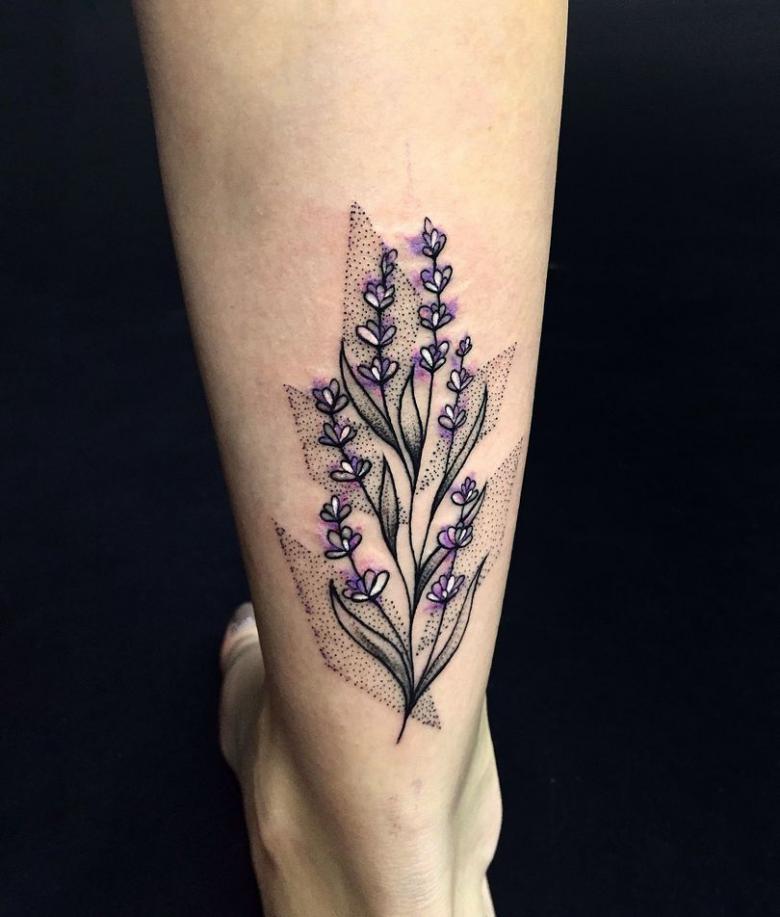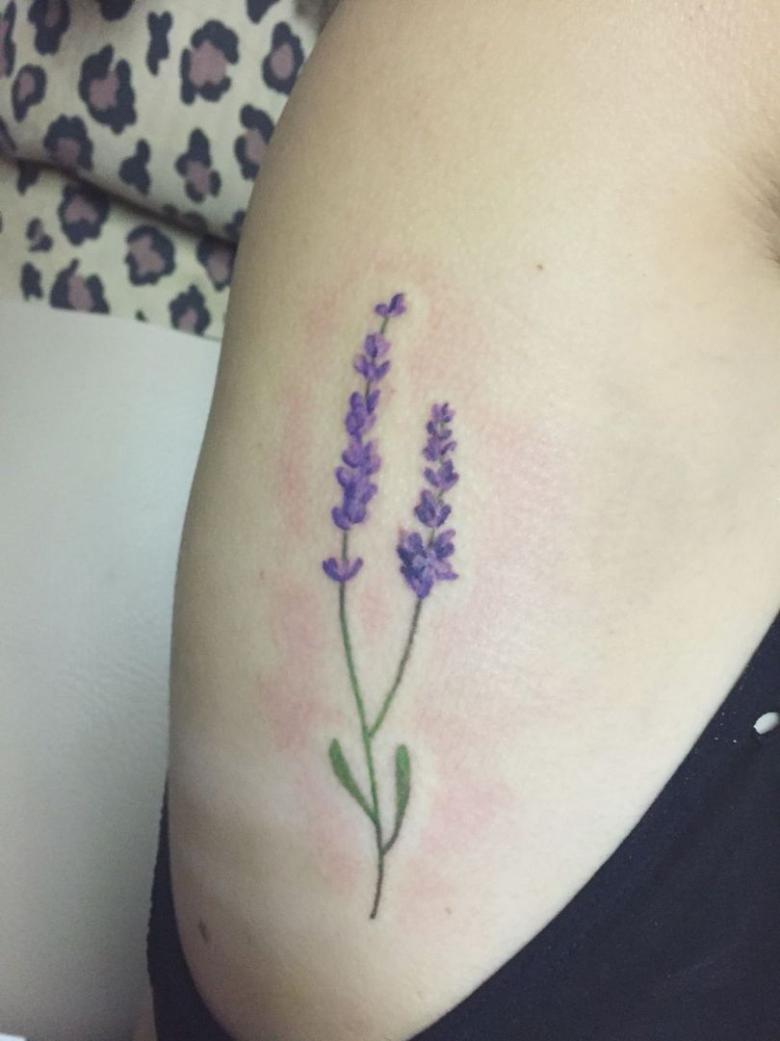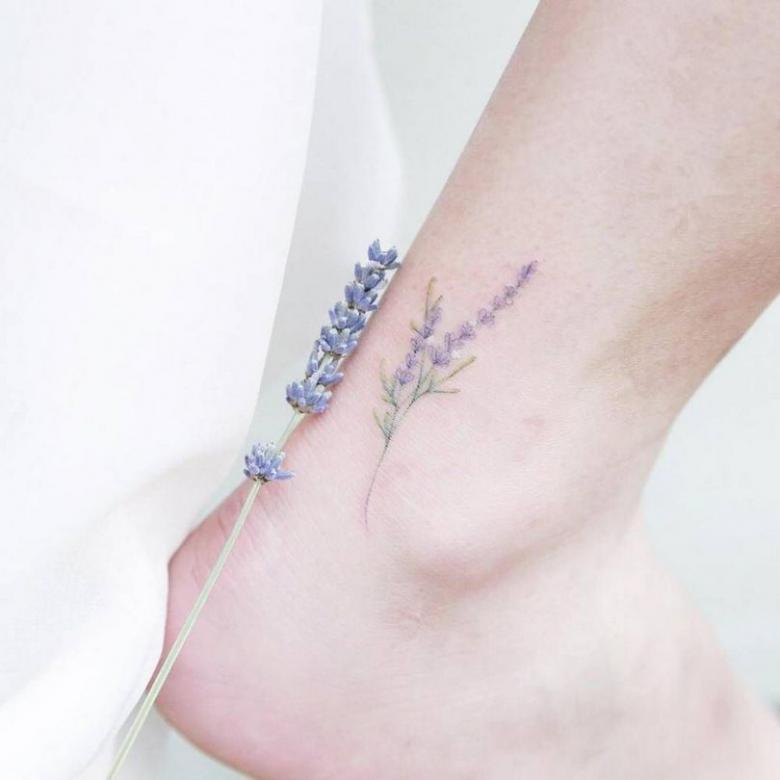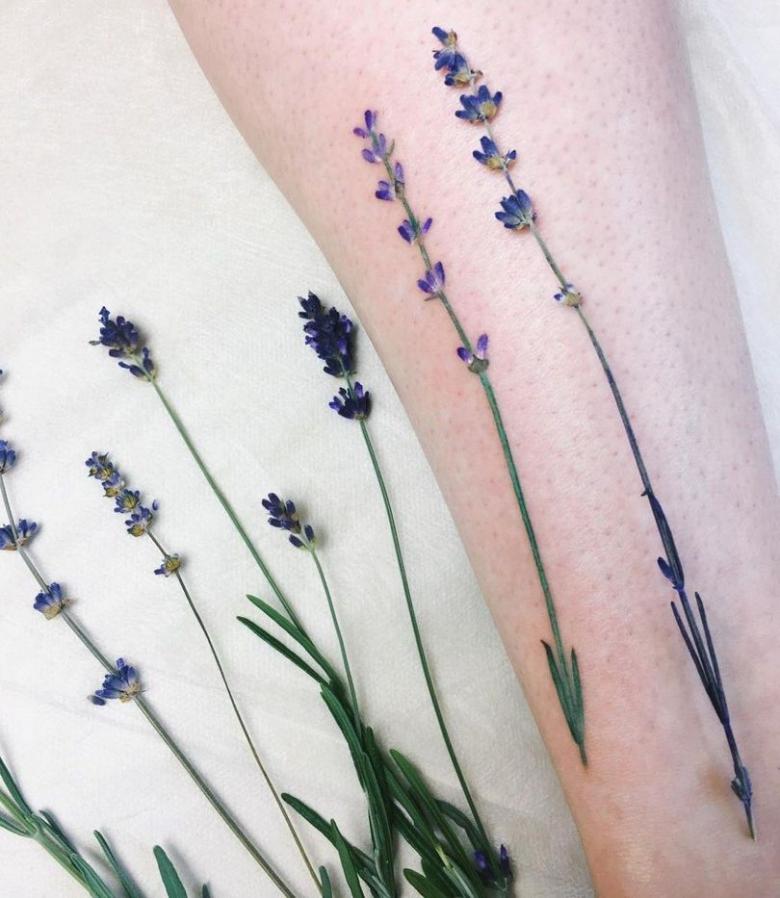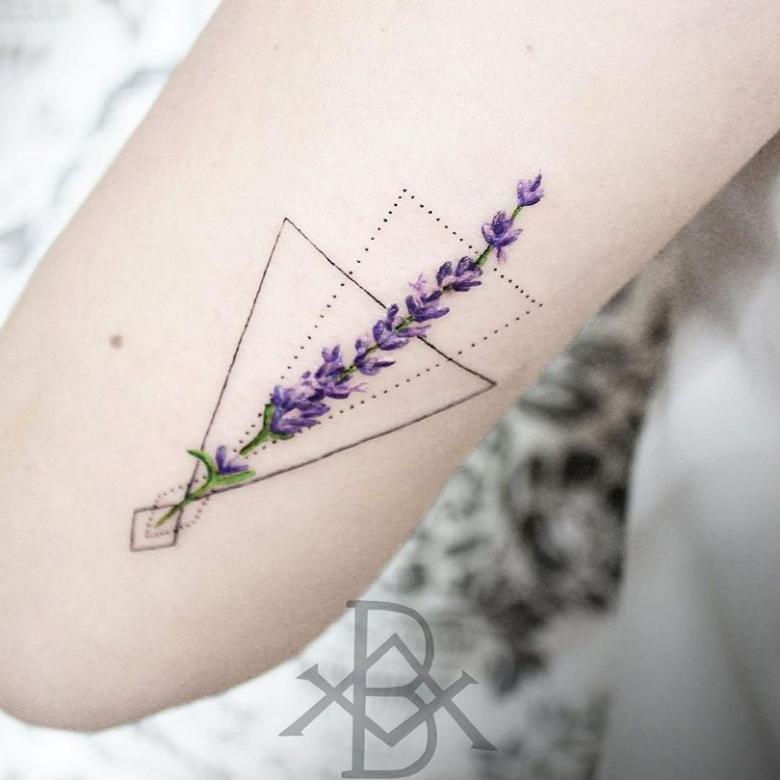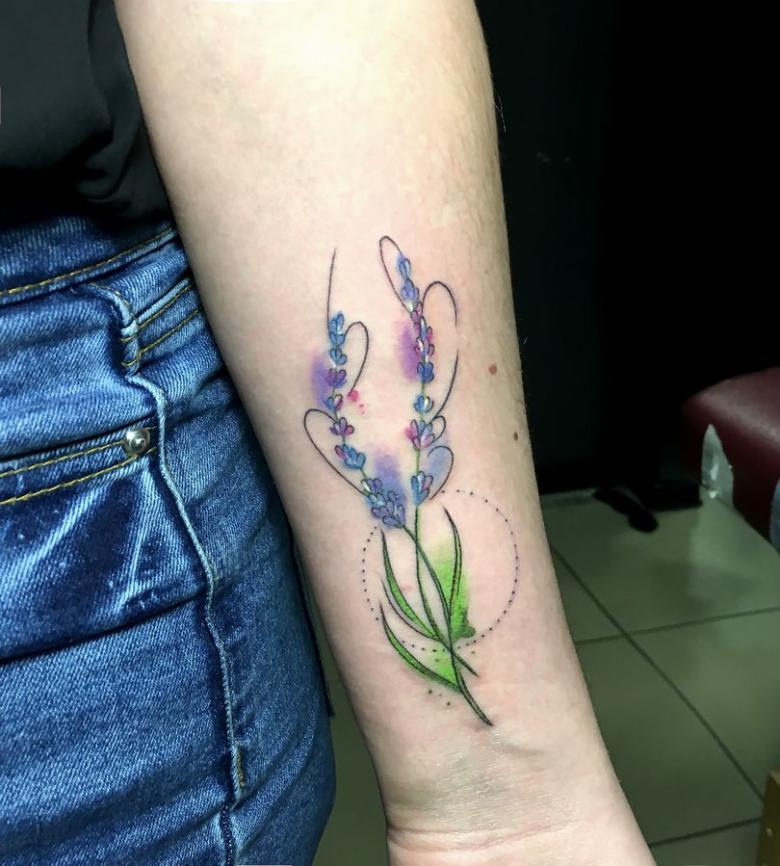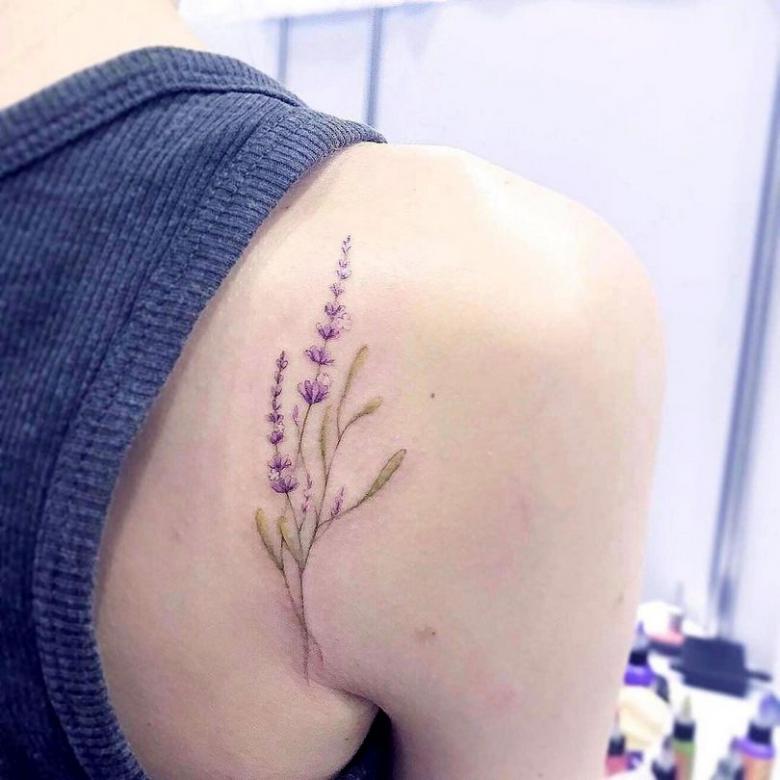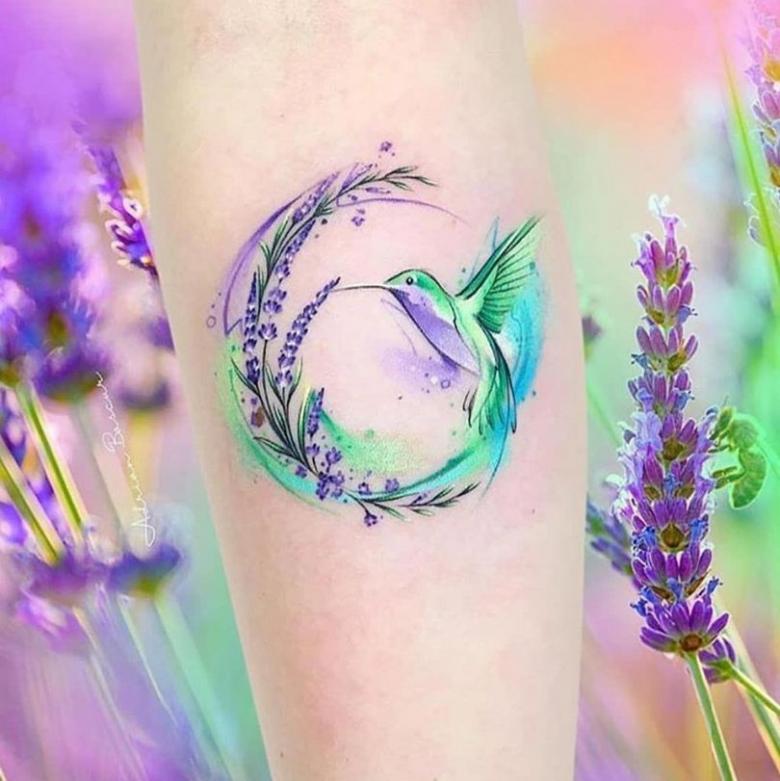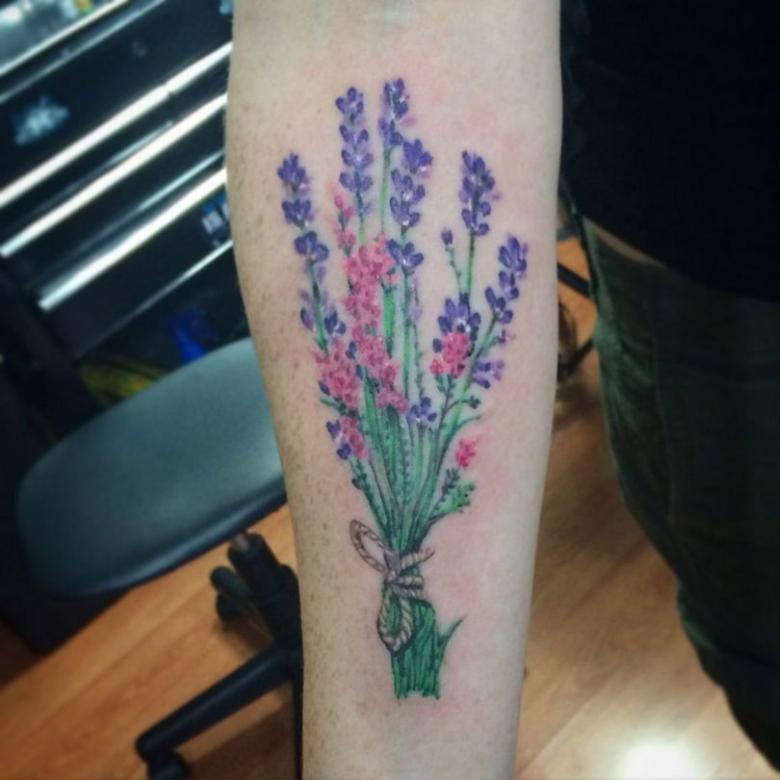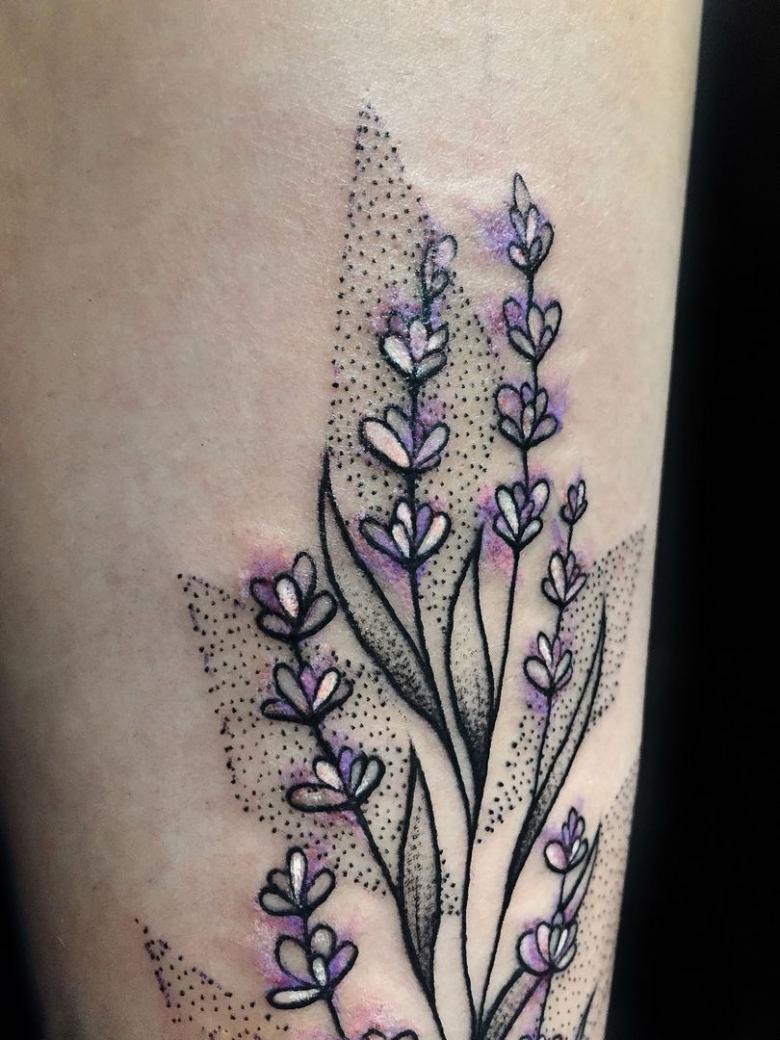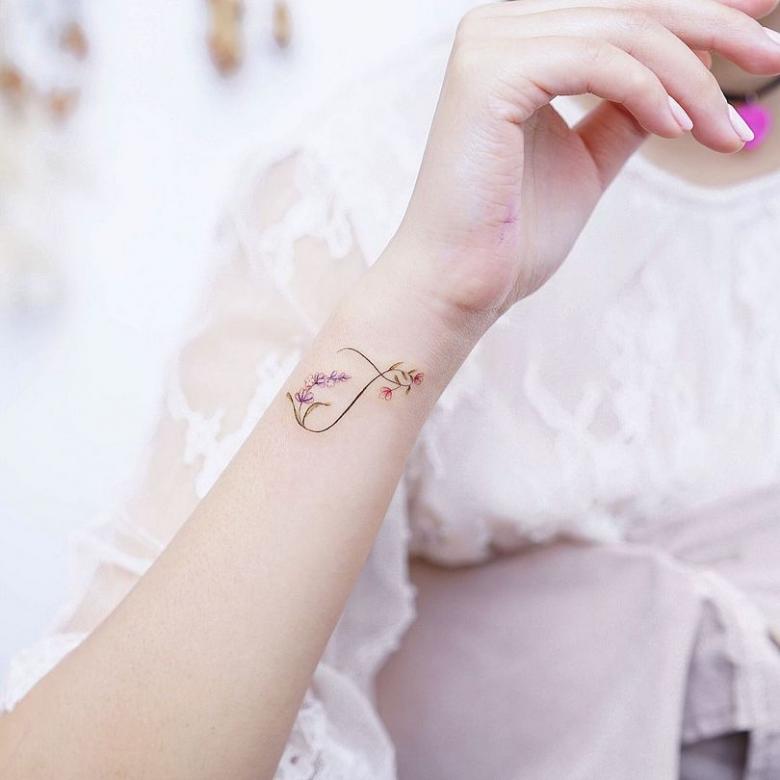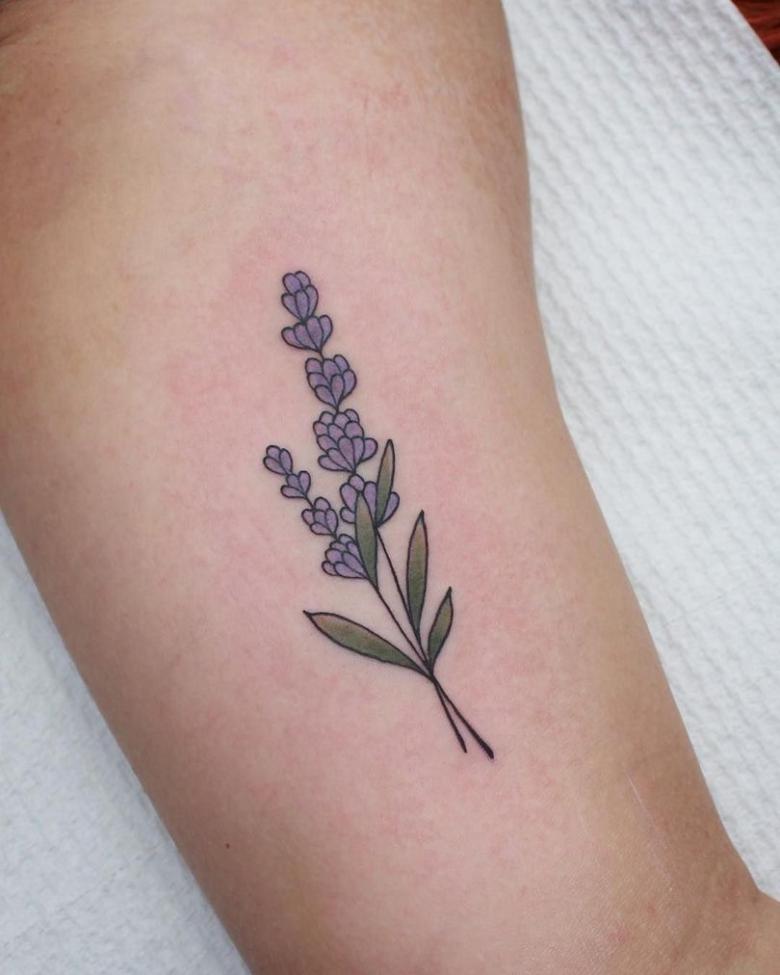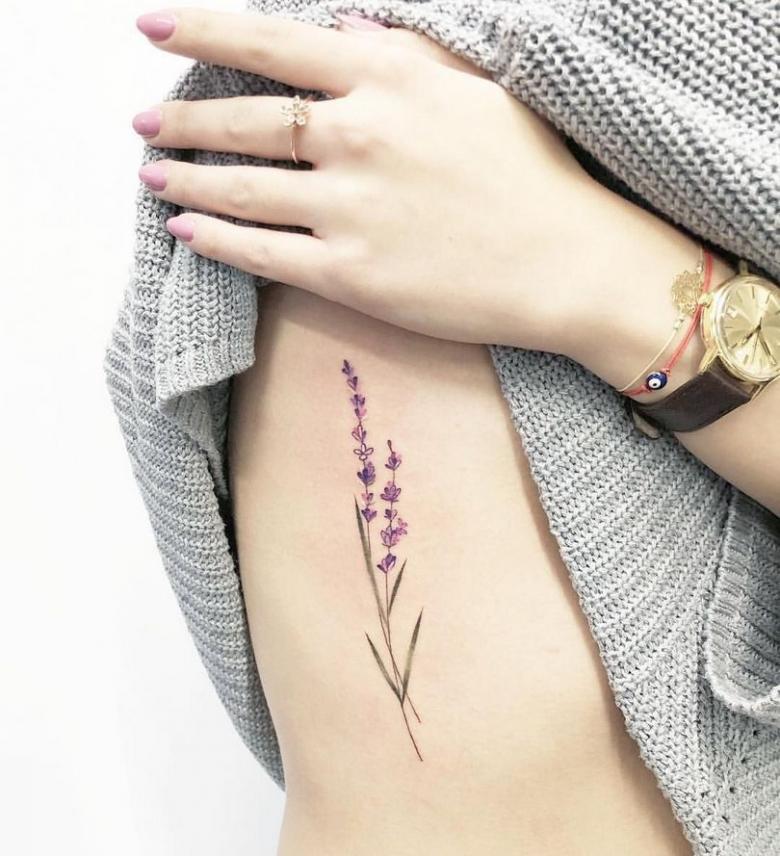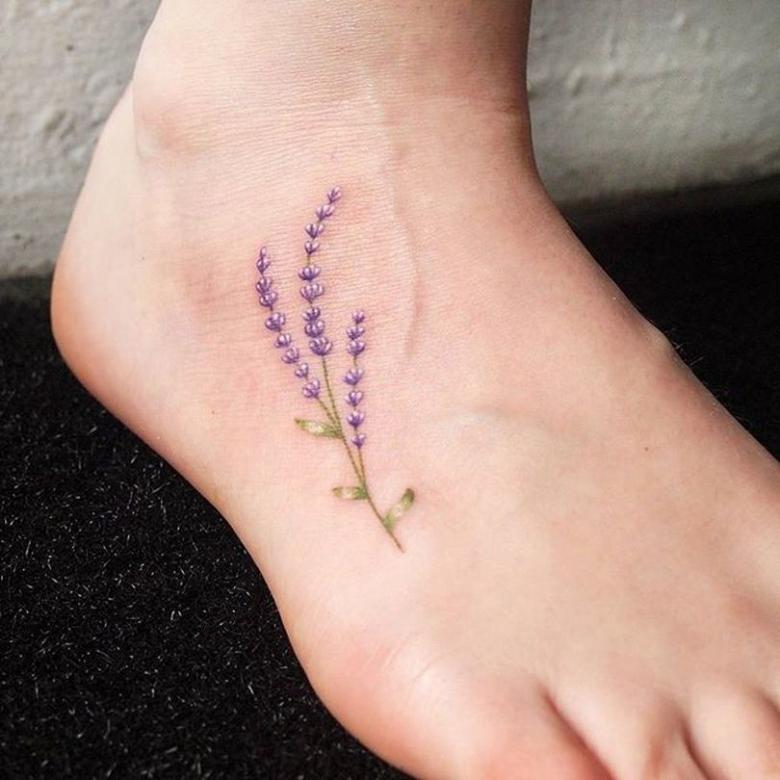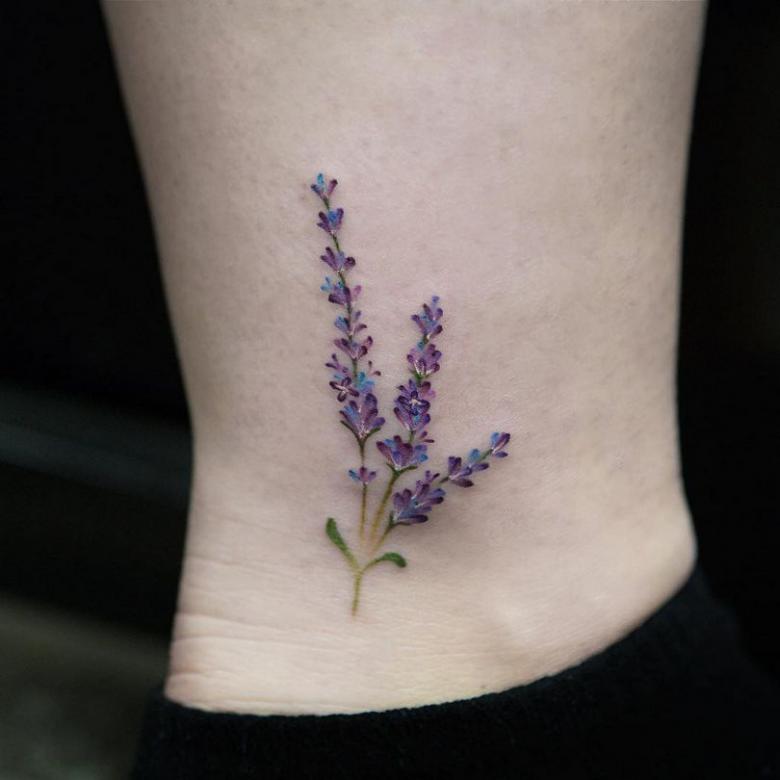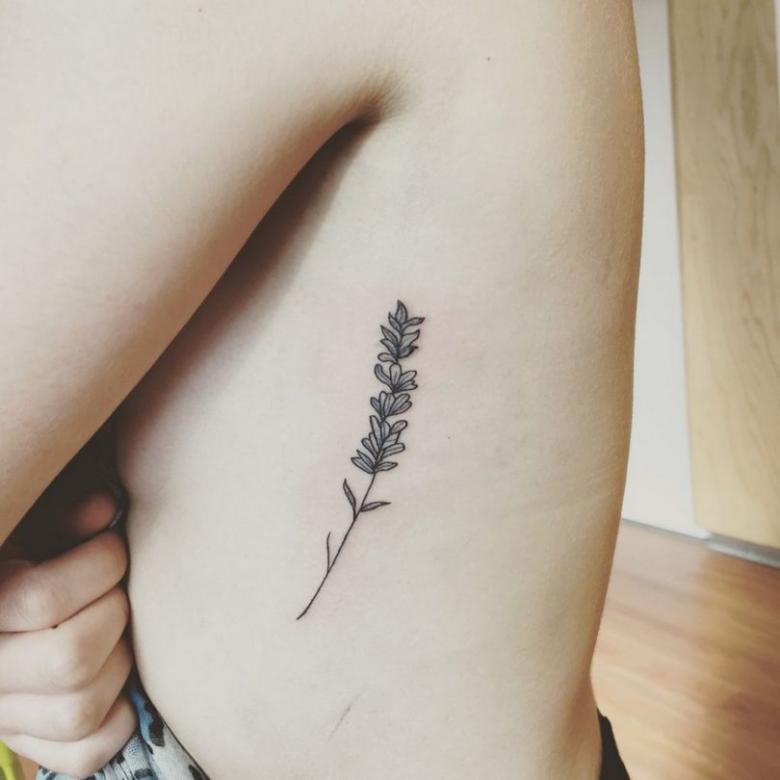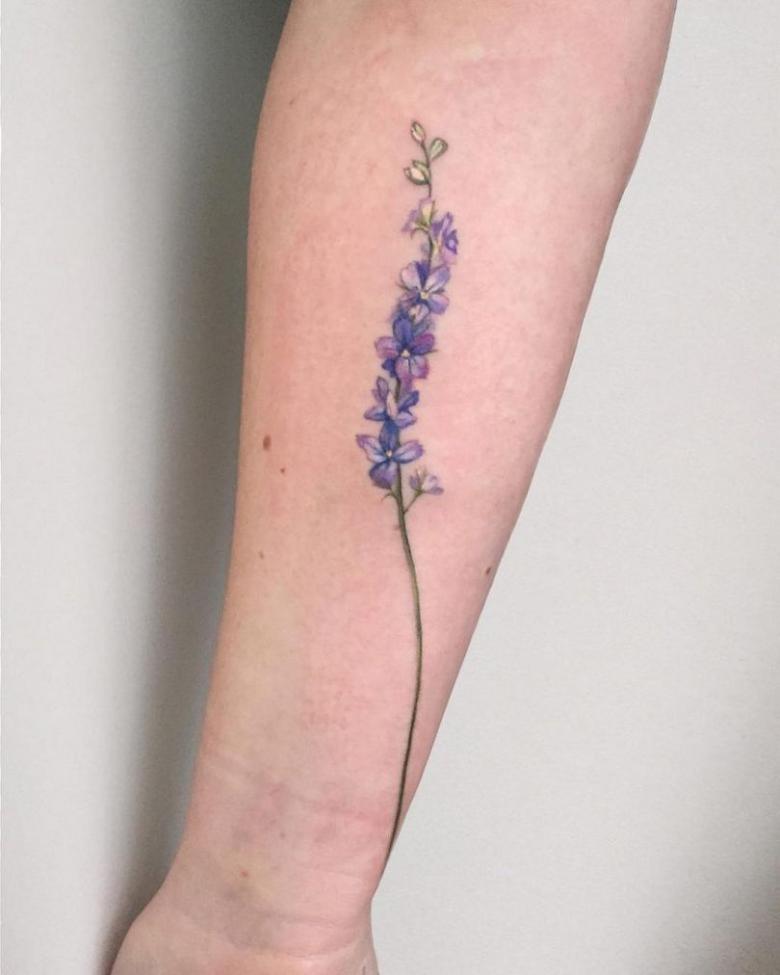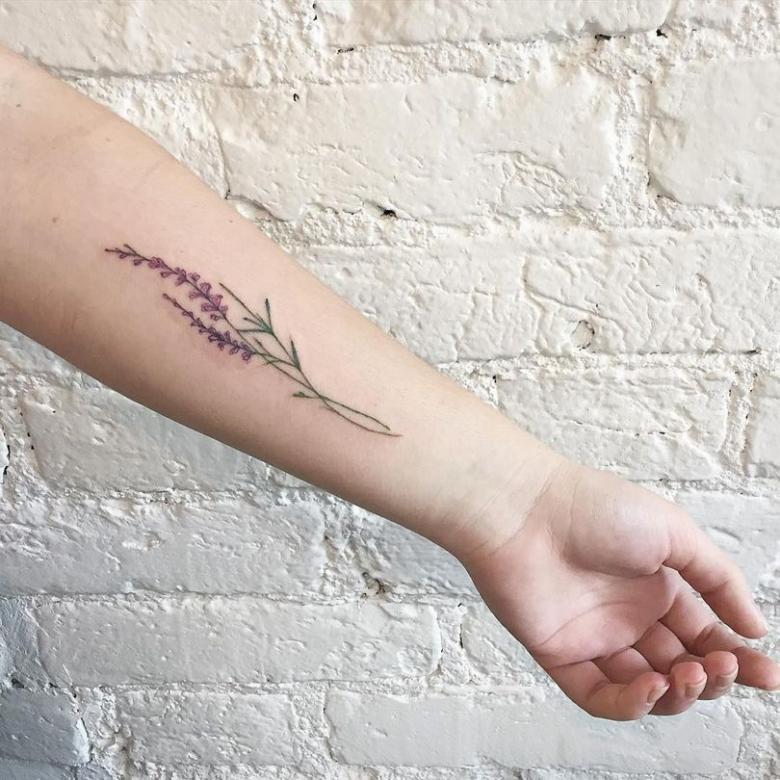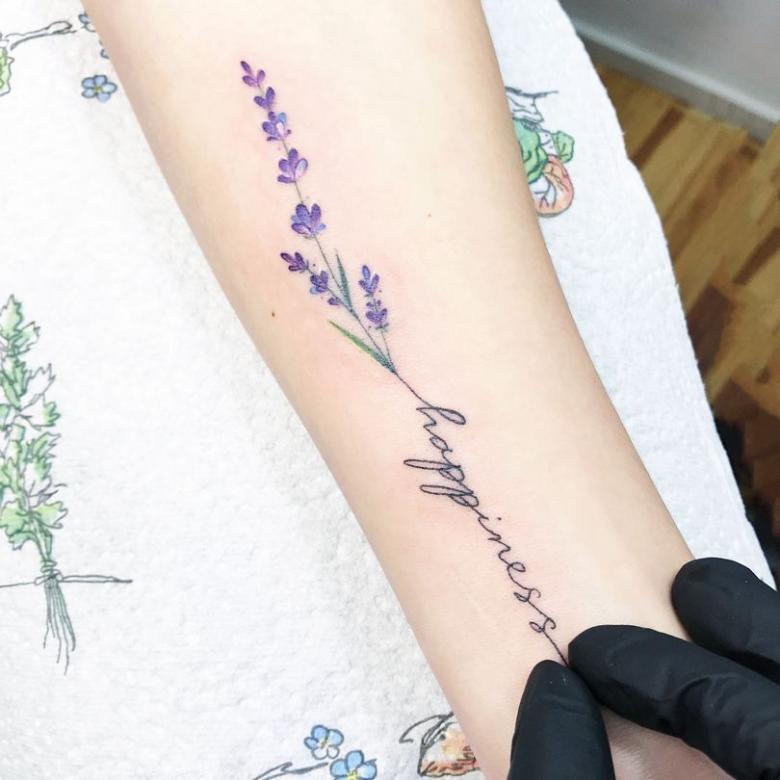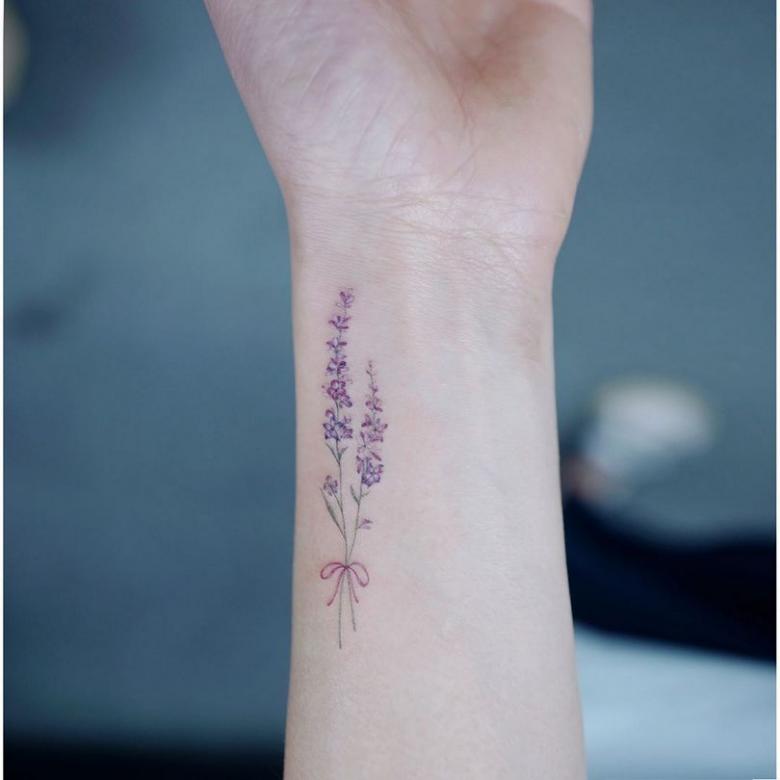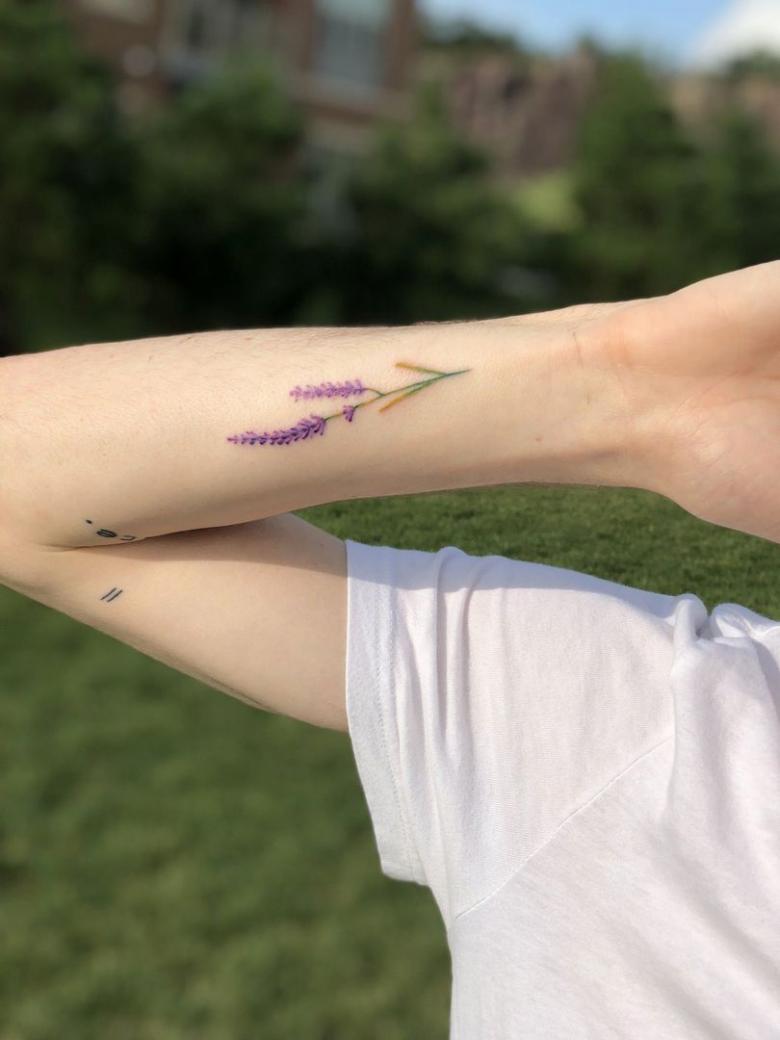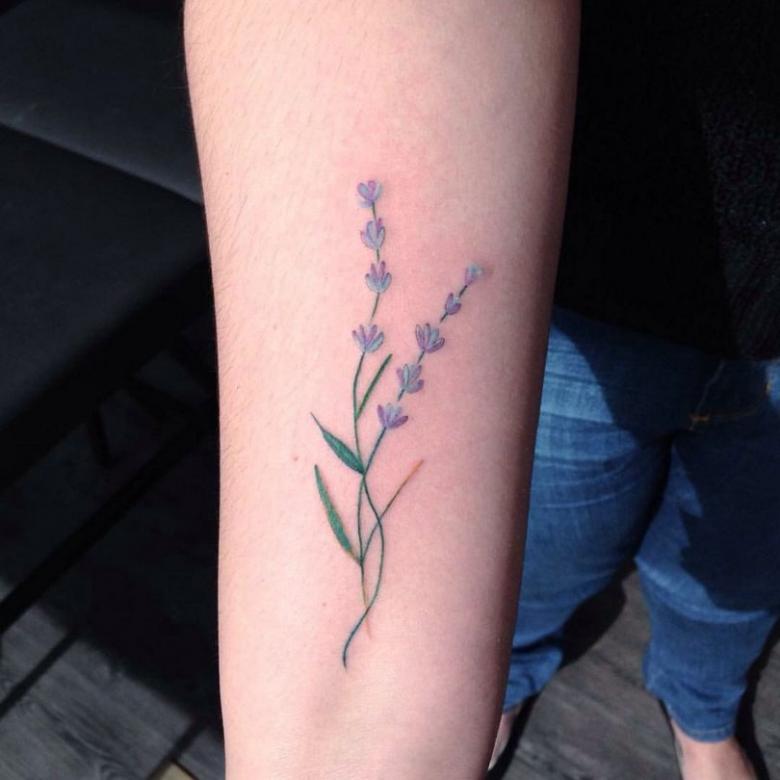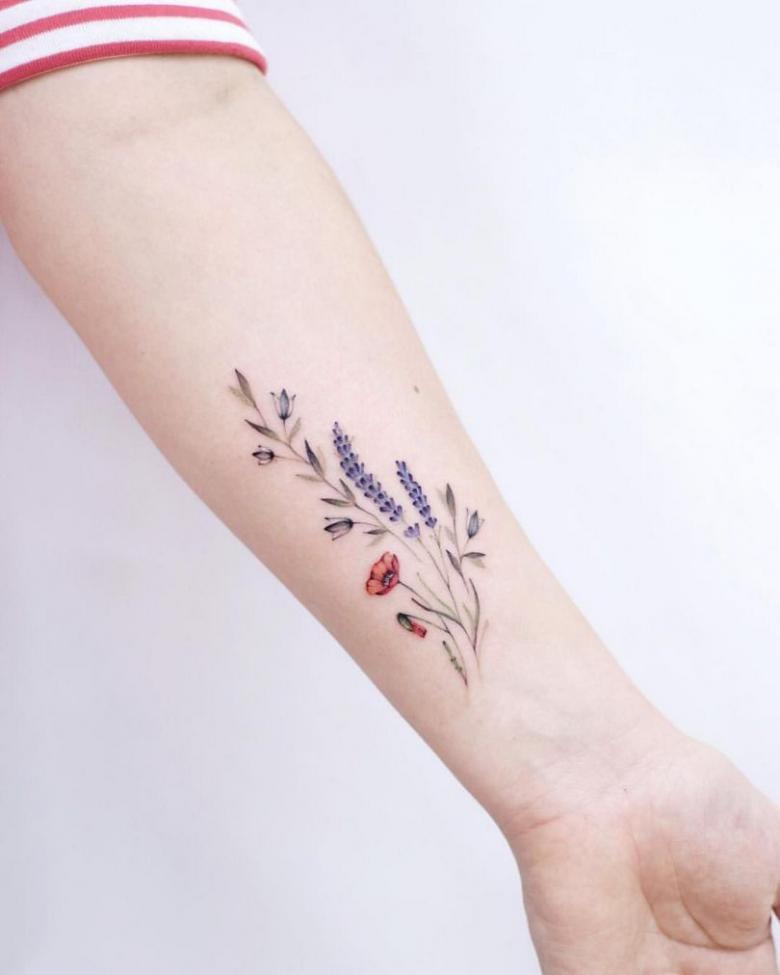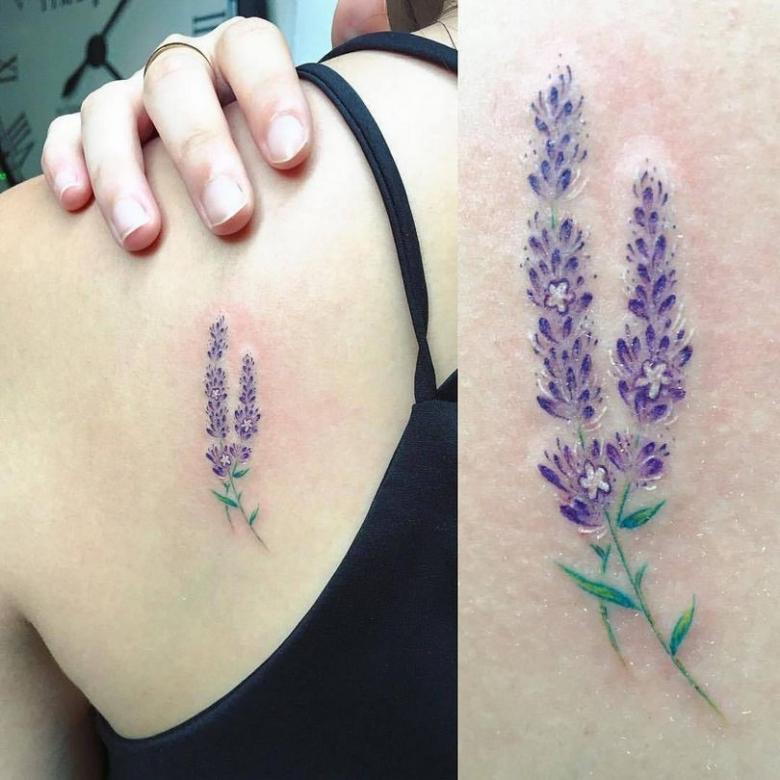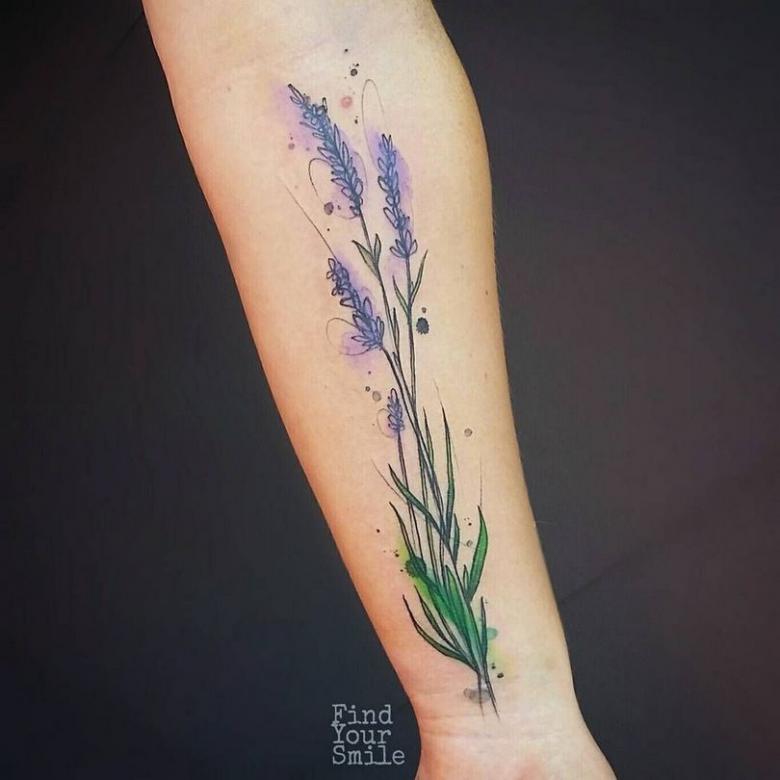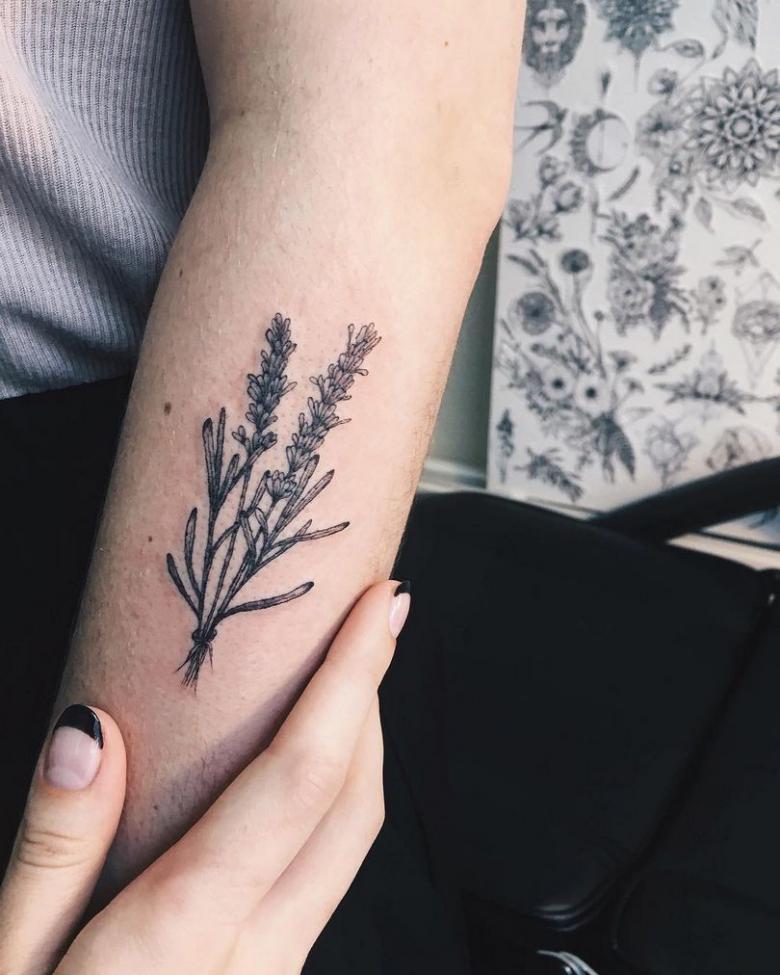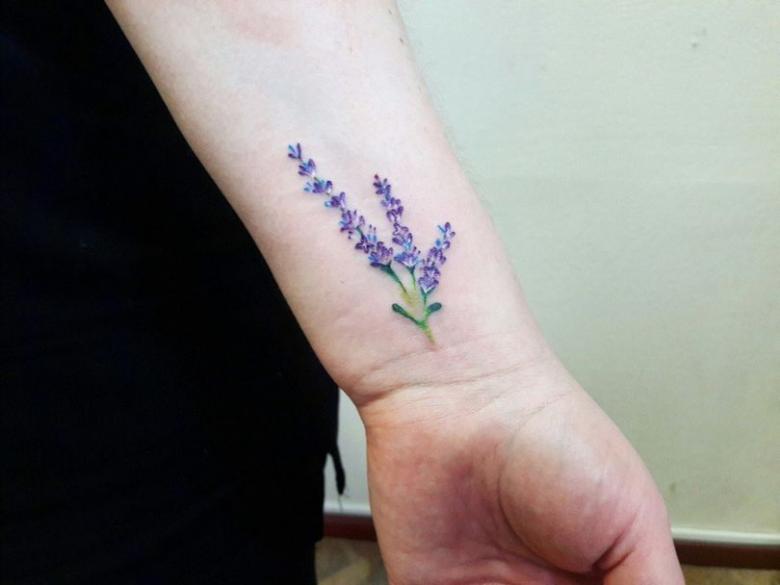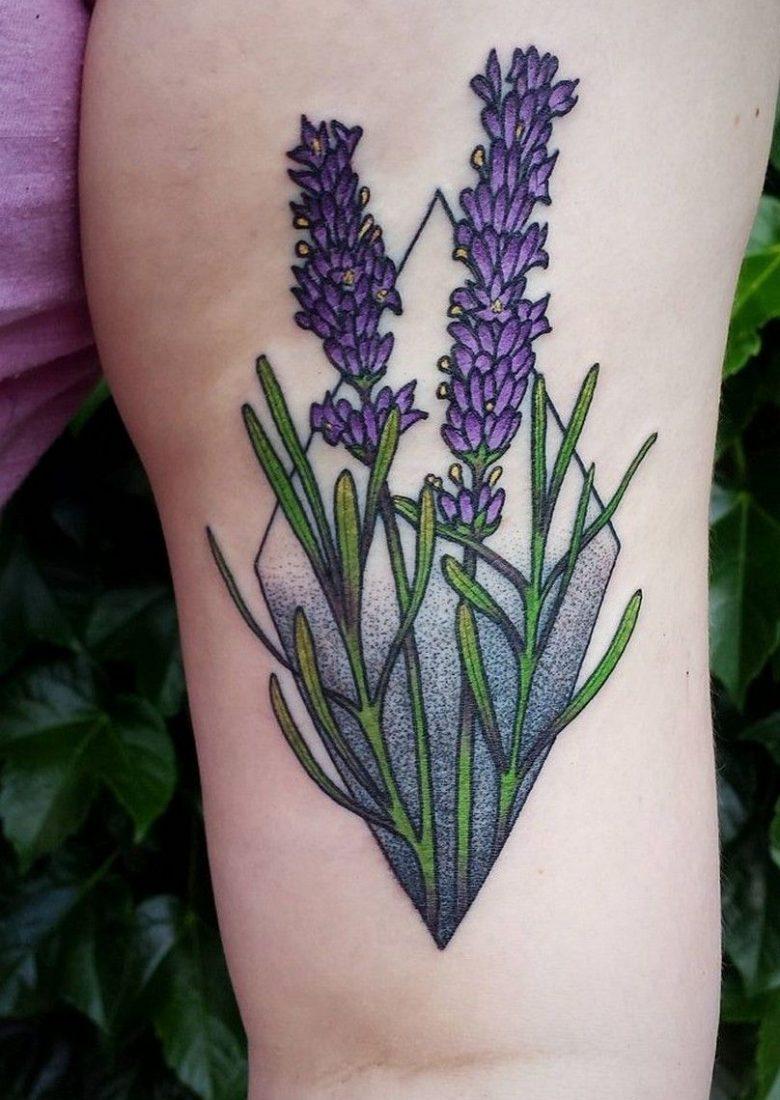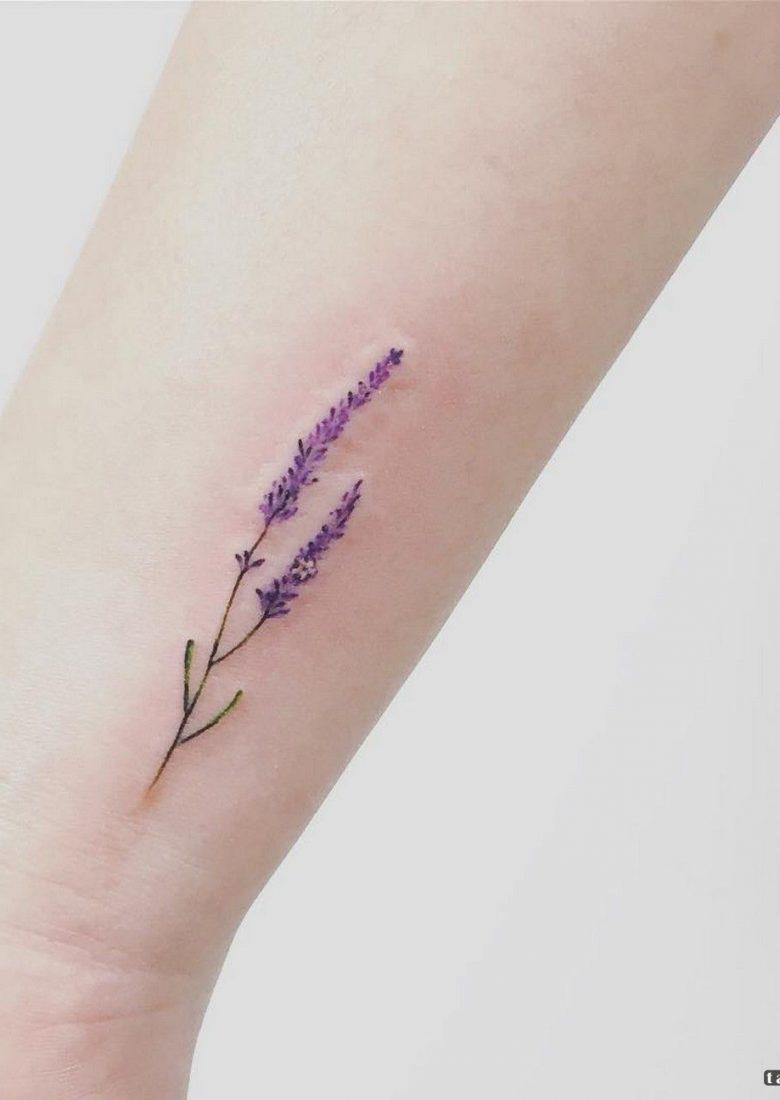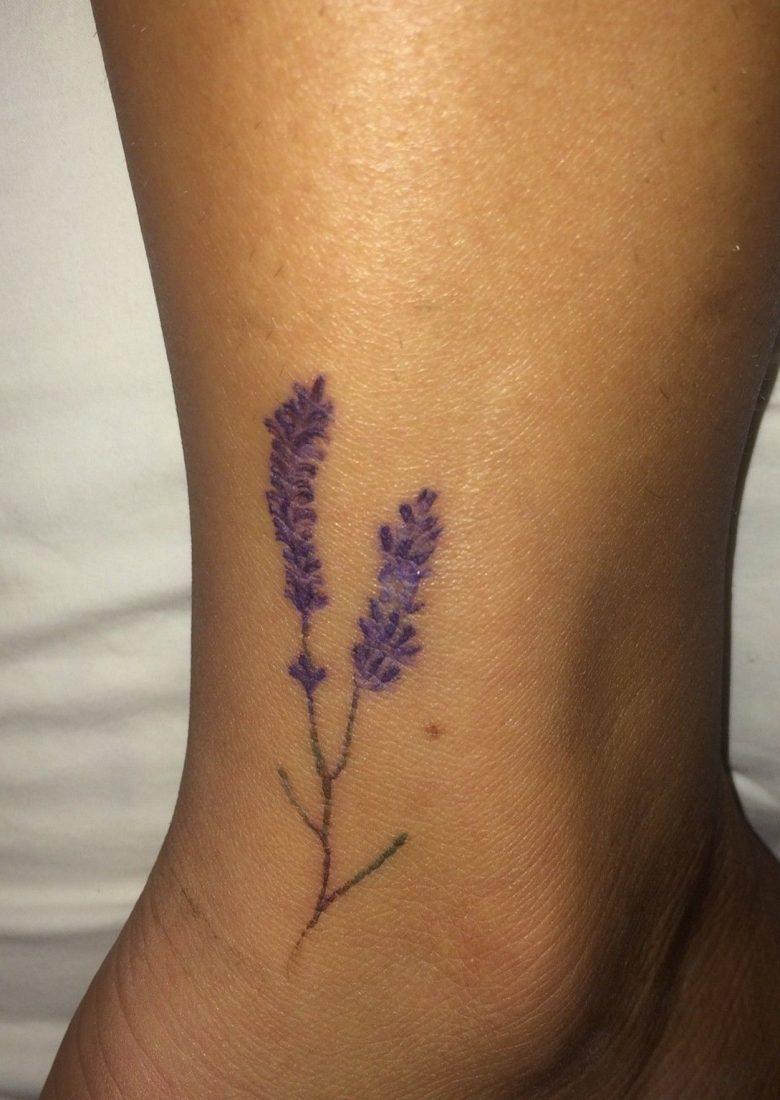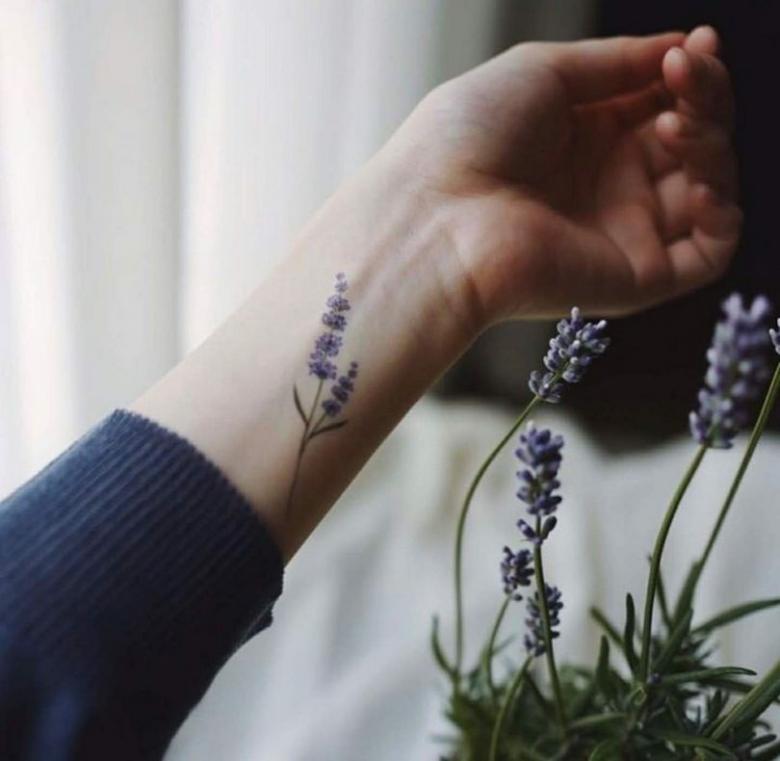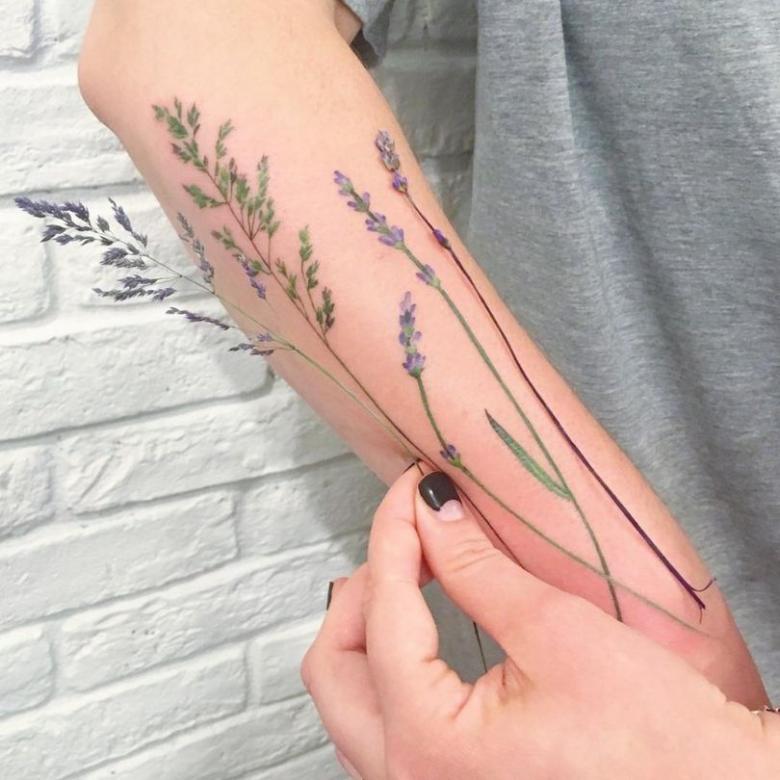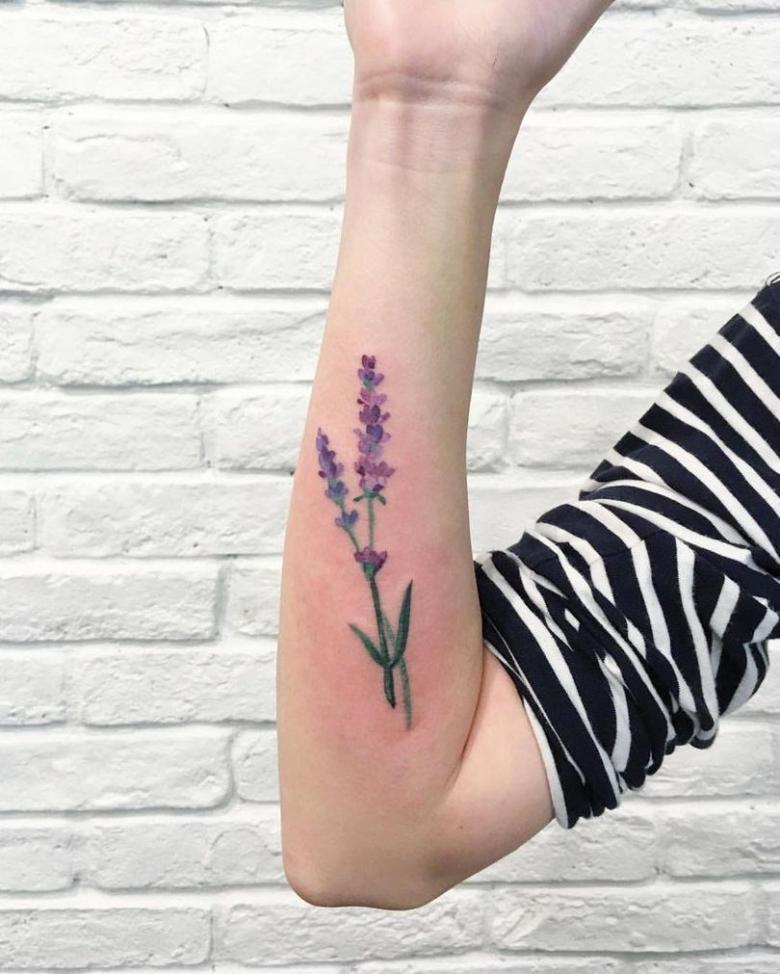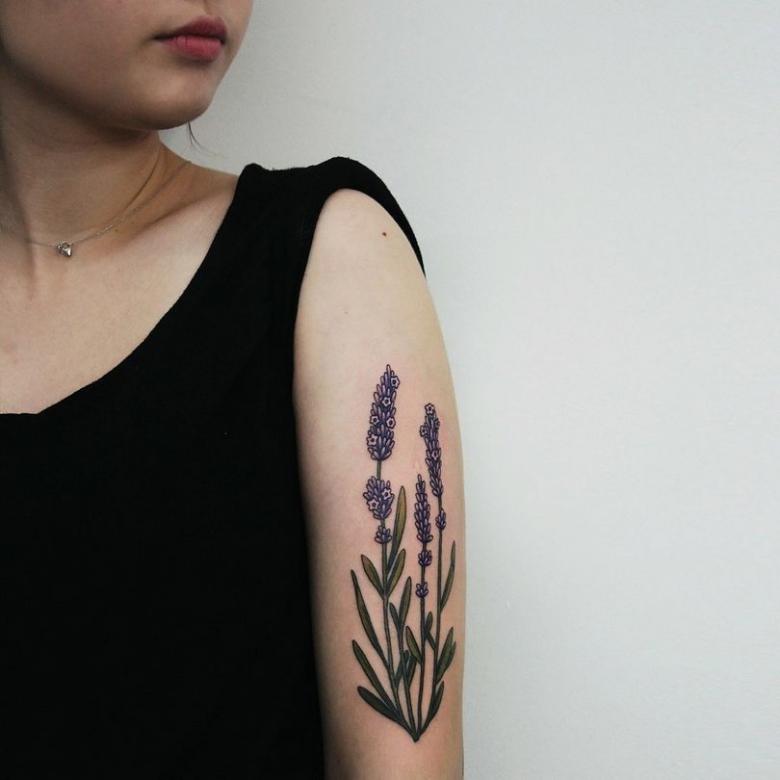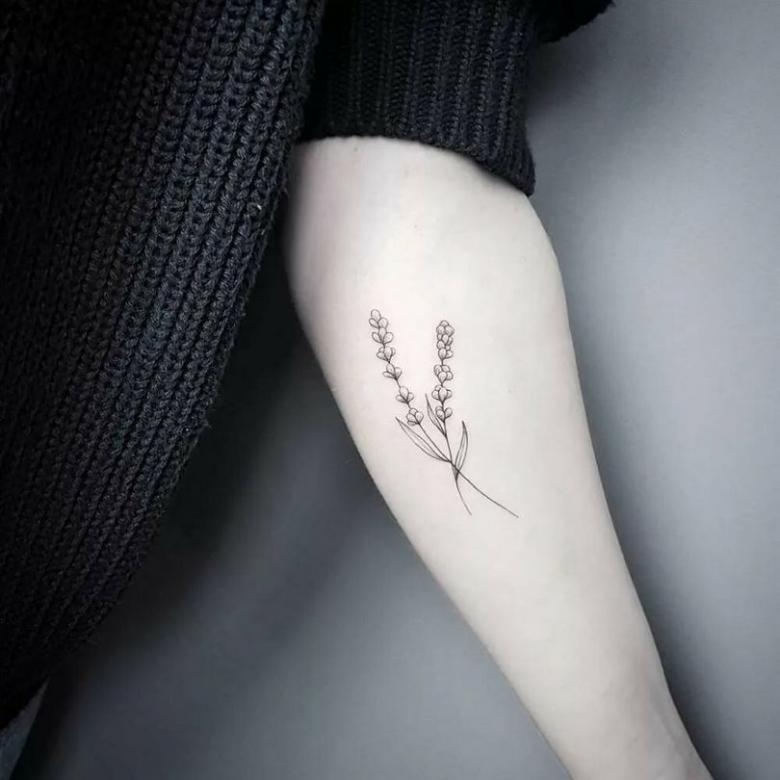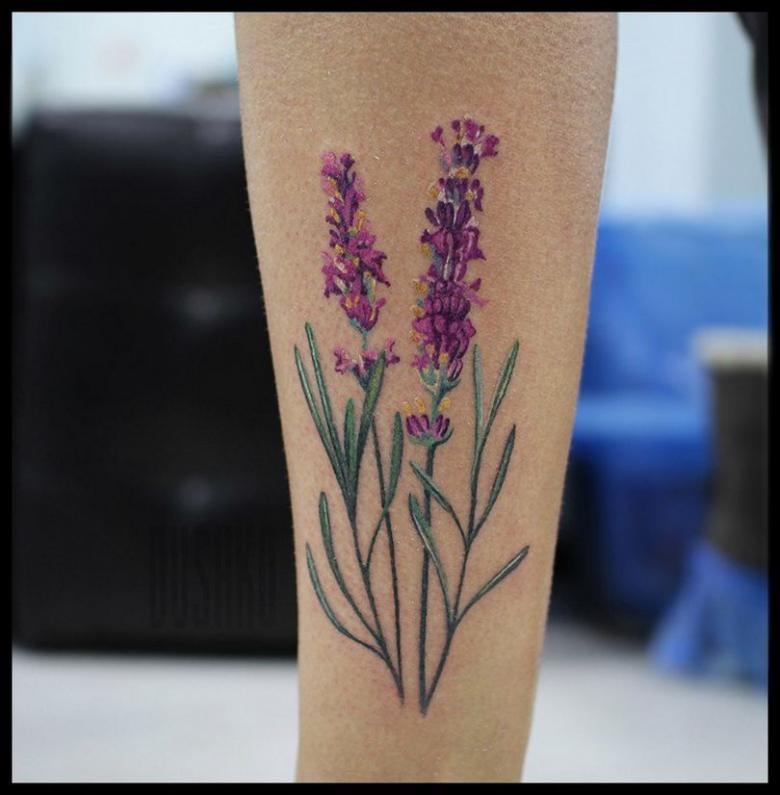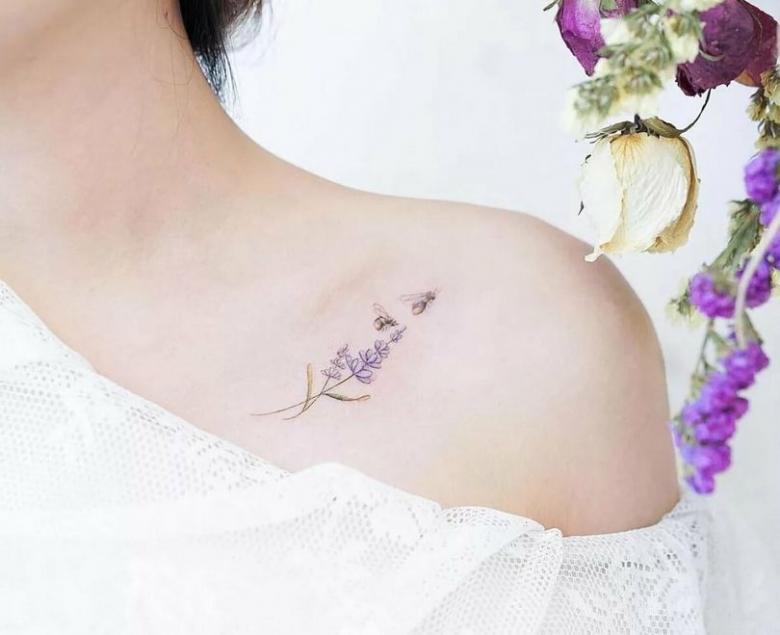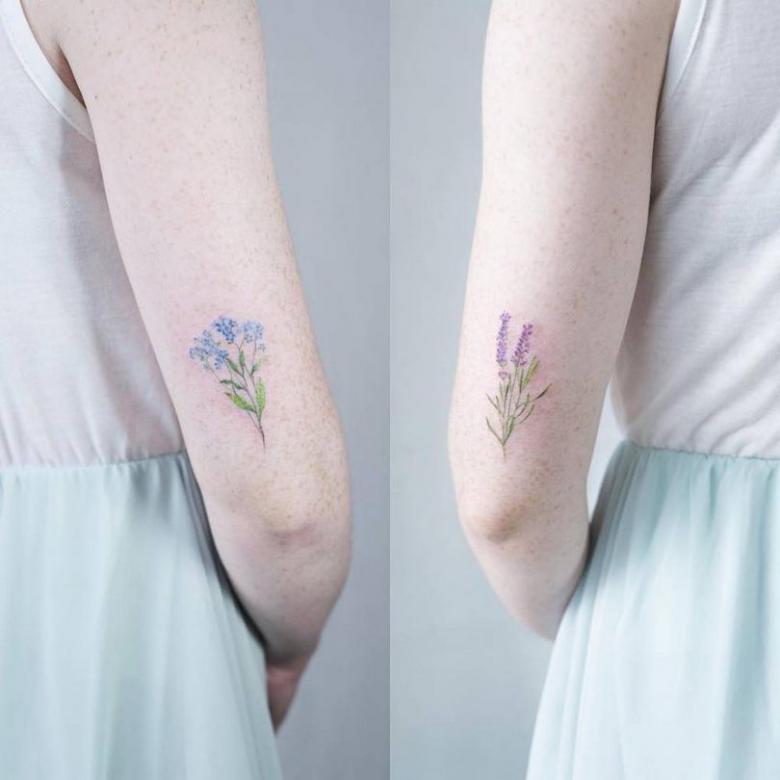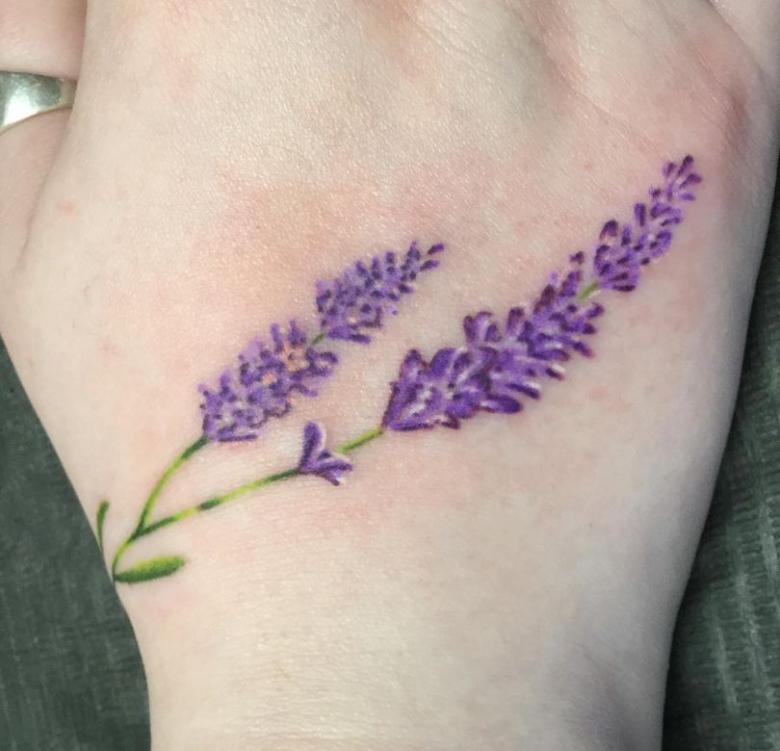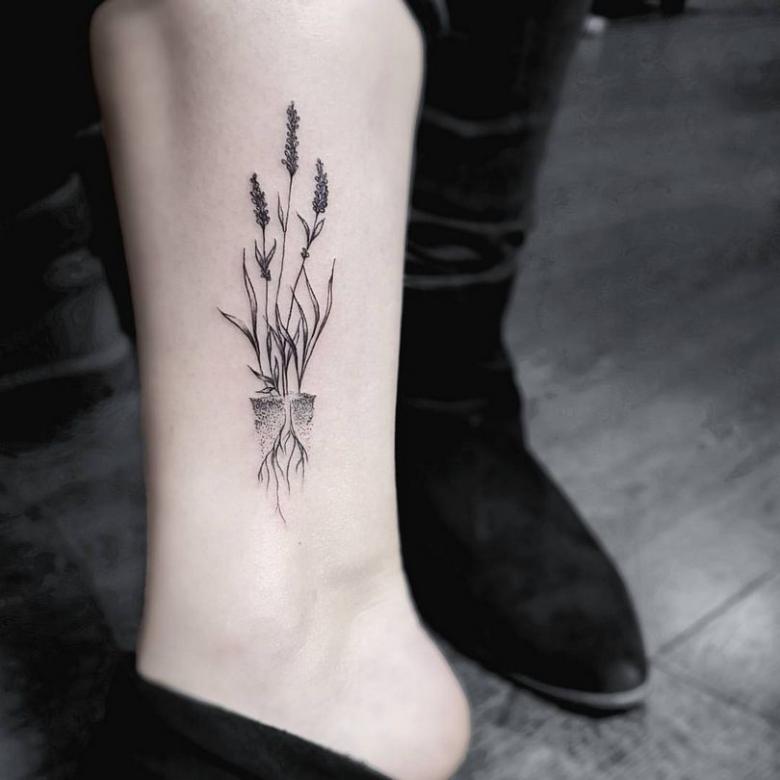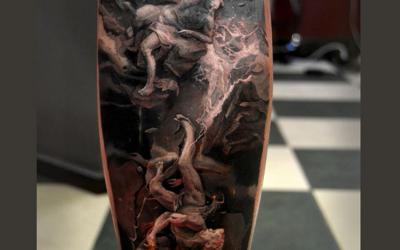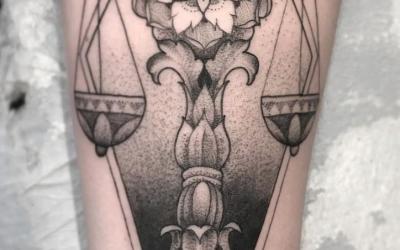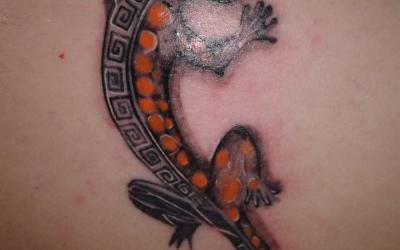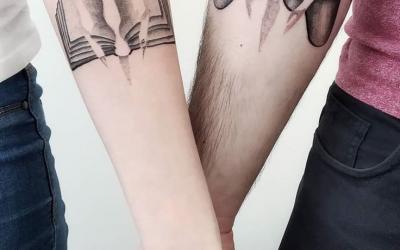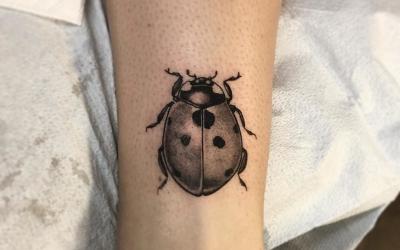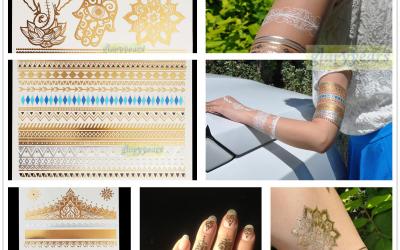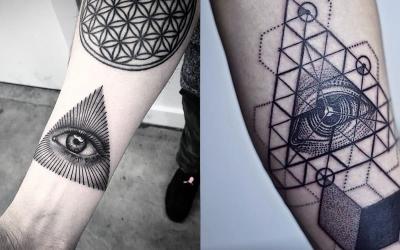Tattoo lavender - meaning for girls, traditions and history of use, where to place, interesting photo ideas
Lavender is one of the most common symbols for tattoos. The meaning, the history of the use of this fragrant and useful plant, traditions and artistic styles of its image in the art of body drawings.

There are many legends and legends about lavender, but most of all this plant is associated with purity, physical and spiritual. Ancient books tell us that when Adam and Eve were expelled from paradise, they received a gift of healing herbs from God, among which lavender was intended to heal the soul.
History of the spread of lavender in Europe
In Christianity, a branch with flowers of a beautiful blue color is one of the attributes of the Virgin Mary. The ancient Romans widely used the properties of this herb. They used it
- for hygiene and disinfection;
- for the preparation of cosmetic preparations;
- As a spice for cooking.

The name itself comes from the Latin word for "wash" because in the Roman baths it was a favorite fragrance. Then, through trade and monasteries, the plant made its way to Europe and began to be cultivated in gardens and plantations.

This was promoted by the increasing use of lavender for medicinal purposes. The Catholic Church calls it a sacred plant and believes it can be used to ward off the forces of the dark world, so the herb is always present in ordination rituals for priests.
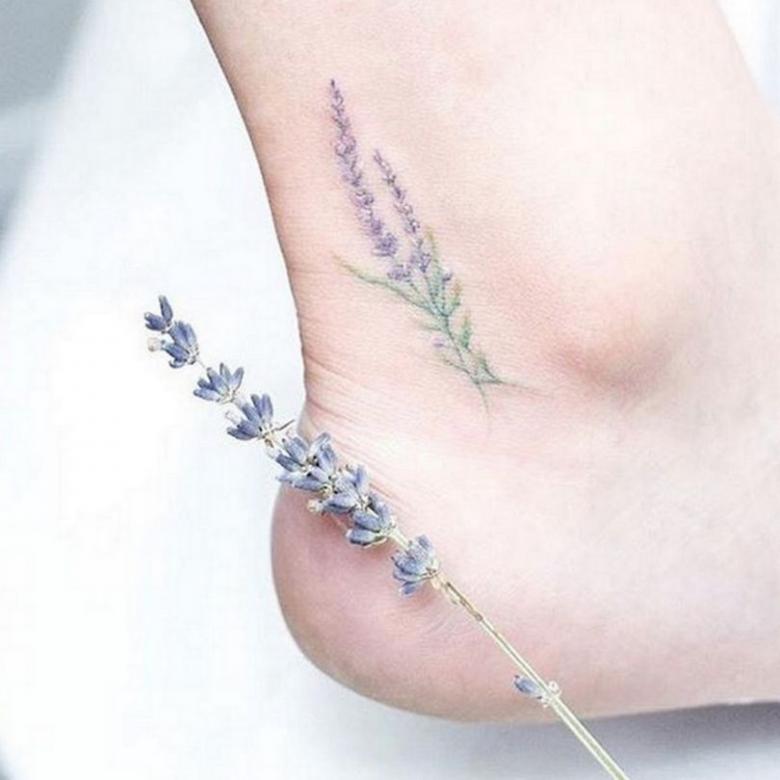
In the Middle Ages, perfumes were made in which lavender was the main ingredient. In addition to smelling good, they helped women stay beautiful and healthy.
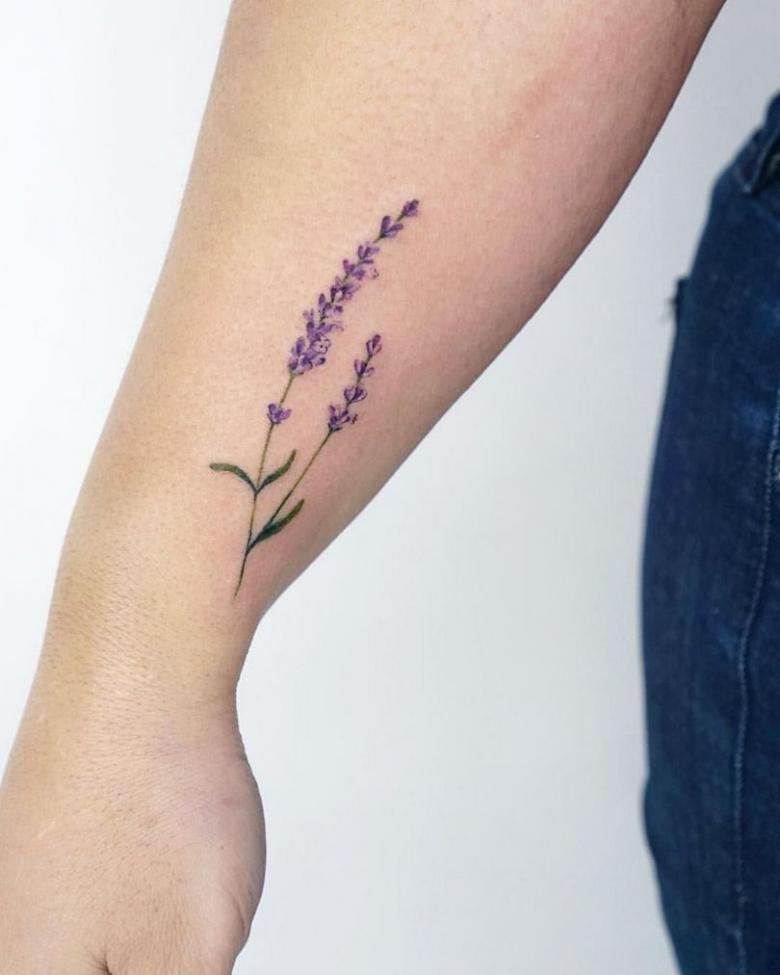
From the 17th century on the miraculous qualities of the flower arose and developed the famous production of French perfume. The Japanese believe that this plant helps one do good deeds and improves one's mood.
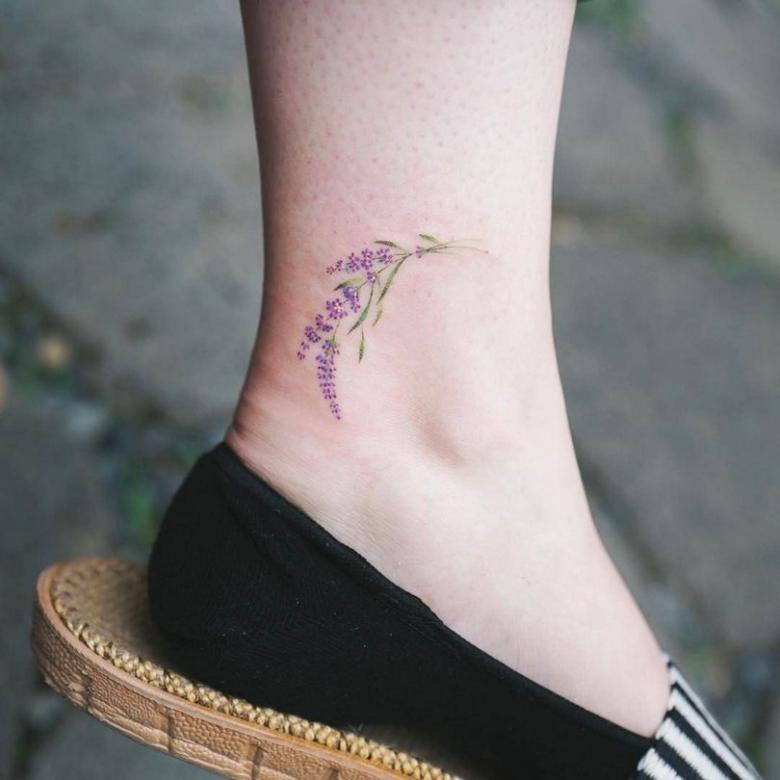
Essential oils from it protect against viral diseases and increase the overall vitality of the body. The flower has deservedly become a symbol of purification and health. Poems are written about it, songs are sung, its images are found in paintings and reliefs.
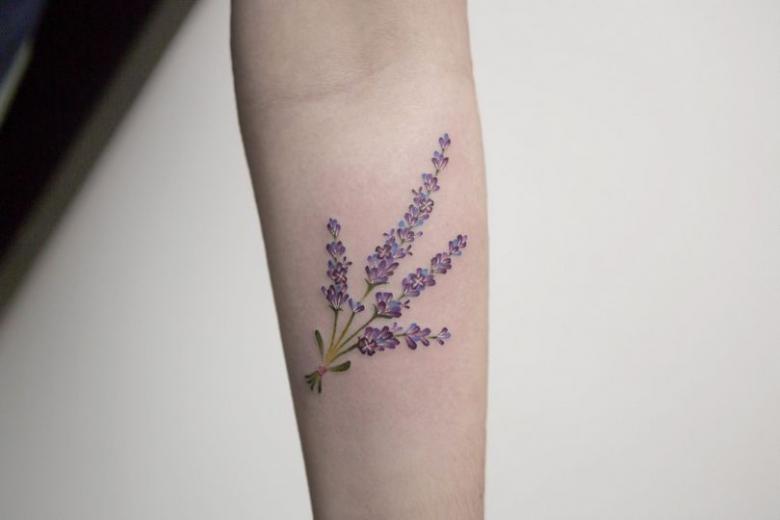
Symbolism of lavender flowers in the tattoo
The mystical meaning that people since ancient times have attributed to lavender, explains the great demand of those wishing to depict it on the body in the form of a tattoo. The general meaning of a tattoo with the sprigs of this plant comes down to peace, protection and love.
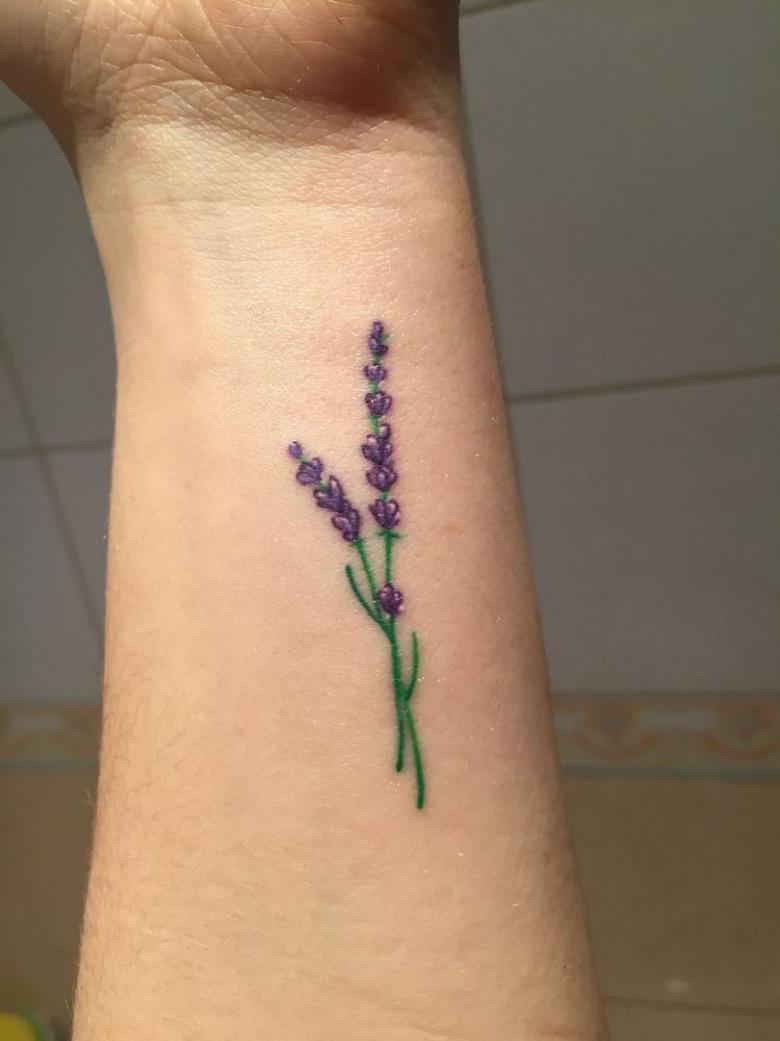
Darker and contrasting patterns gravitate to the magical, mysterious symbolism, light and warm bring the meaning of balance, peace of mind, and rich bright greens speak of freedom-loving character and openness to all the joys of life.
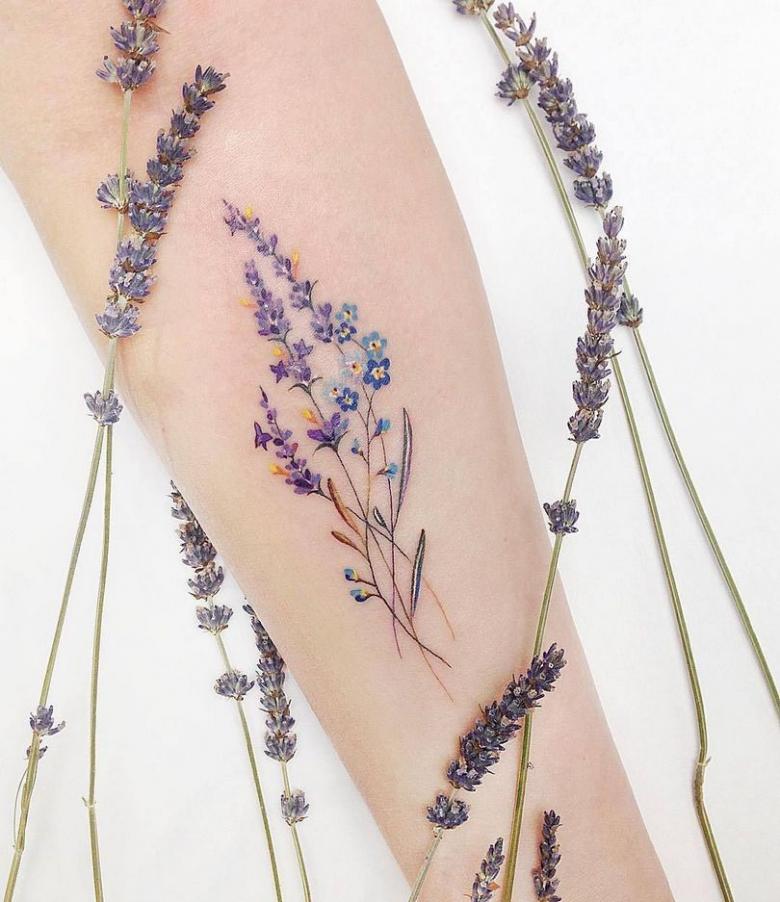
Women often try to hide lavender padding under their clothes as a talisman against evil spirits and an idea of religious preference. The most common drawings are on the back and in the rib space. Beautiful and organic look tattoos of shingles of the plant's branches in the form of bracelets on the wrists, forearms and ankles.
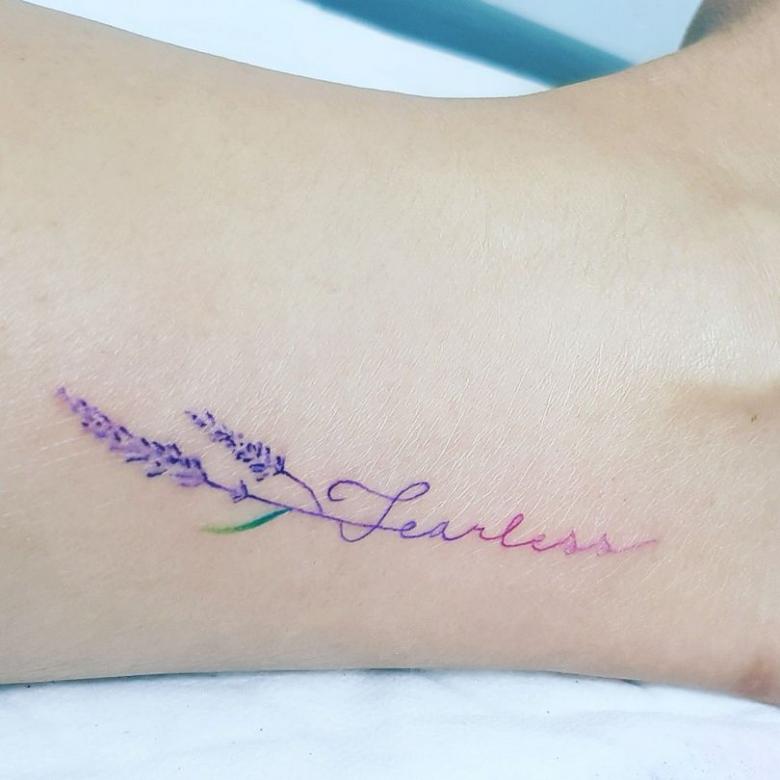
A delicate image in the form of a flower will shade the charm of a slender female neck. Girls believe that lavender will help them to meet their soul mate. Newlyweds prefer to do a tattoo of two crossed branches tied together as a sign of fidelity and eternal love.
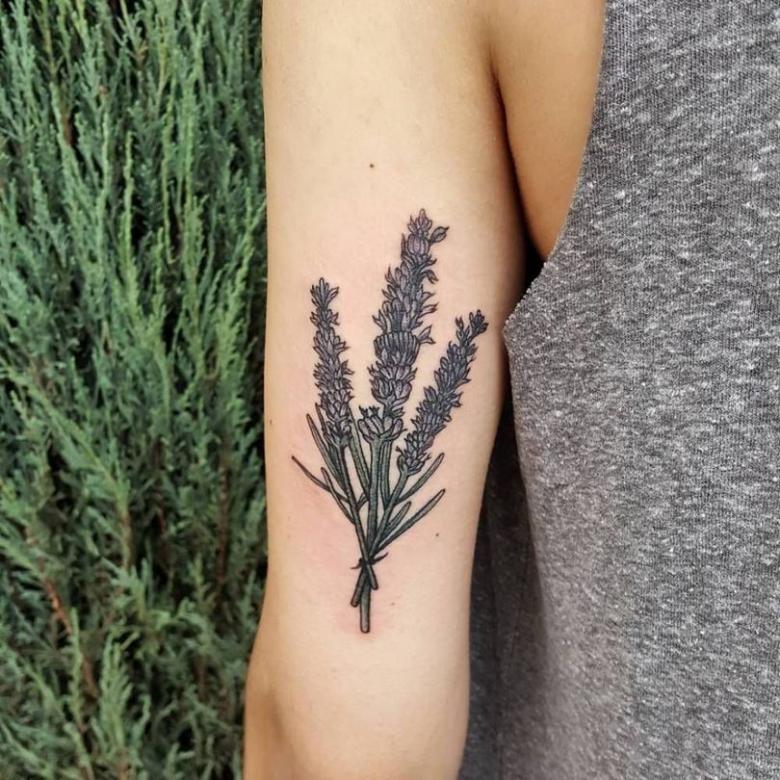
Men, too, do not ignore the floral symbolism with this plant. In the French military, lavender was associated with the idea of defending the homeland. And the ram's skull surrounded by its flowering branches protects in battles, gives courage and depth of thought.
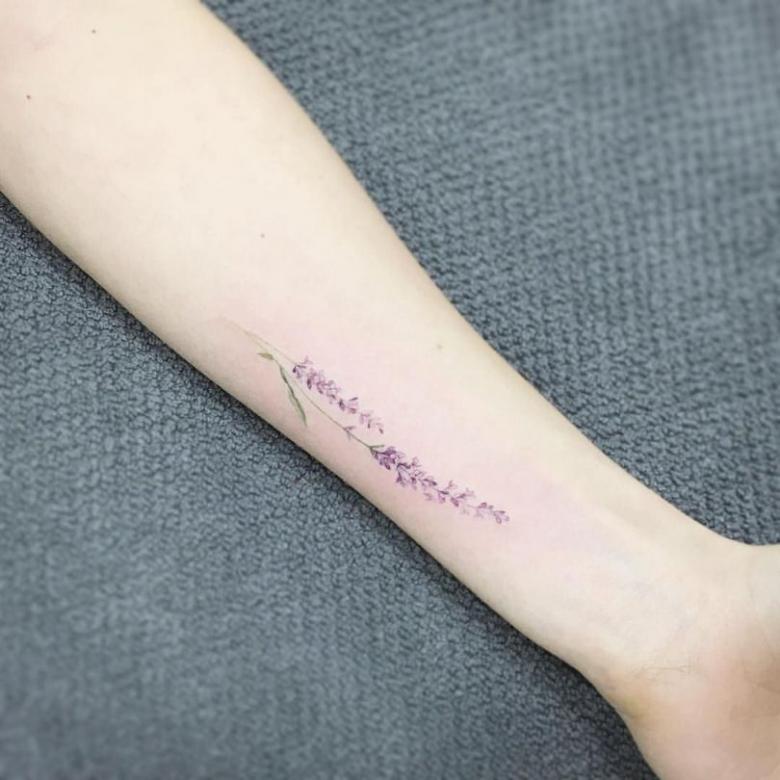
In the men's traditions of body painting there is more gravitation to the subject, semantic load of the image. Style options also vary. It can be a monochrome, brutal sketch or a color pictorial solution, all depends on the taste, priorities of the customer and the choice of a master. In men, tattoos with such themes look good on the forearms, wrists and legs.
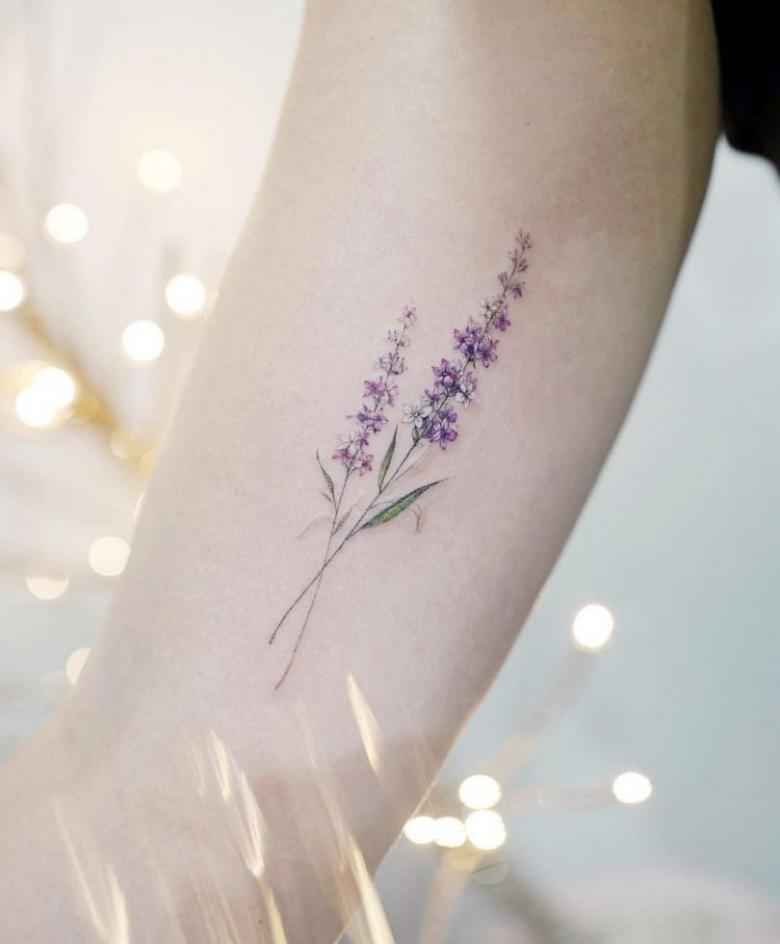
The meaning of the tattoo for a man
Tattoo is always associated with some event in a person's life: with what he experienced or which he would like to see in his biography. The framing of the drawing with dotted or solid frames indicates that it is about memories, the importance of something experienced.

When looking at a symbolic drawing, there is an associative feeling from the connection with the cause of its origin, as well as from the memorable, bright smell of the depicted grass.
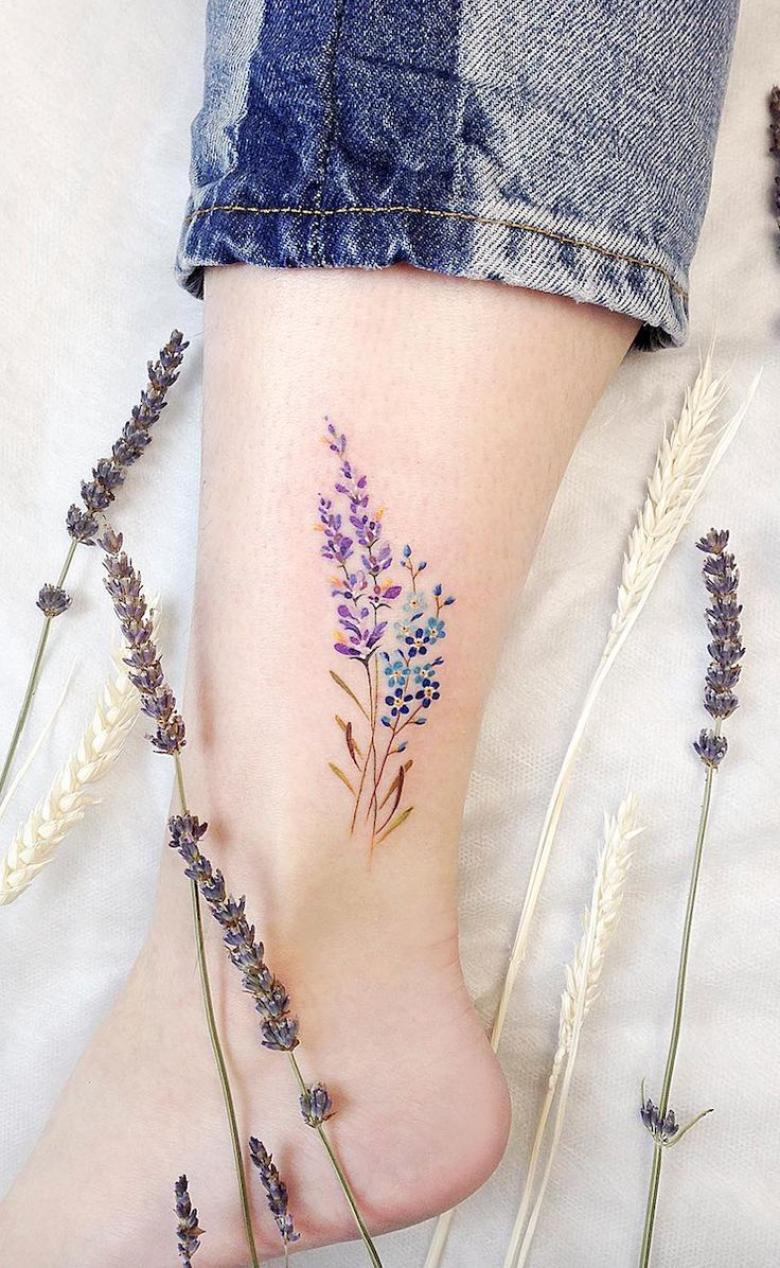
For plant tattoos, the watercolor style is more suitable, which gives them more artistic expression, naturalness and allows the use of halftones and shadows, especially in paintings of large size. Combinations of lavender with graphics and other colors are of interest. Small tattoos can be done in one or two colors.
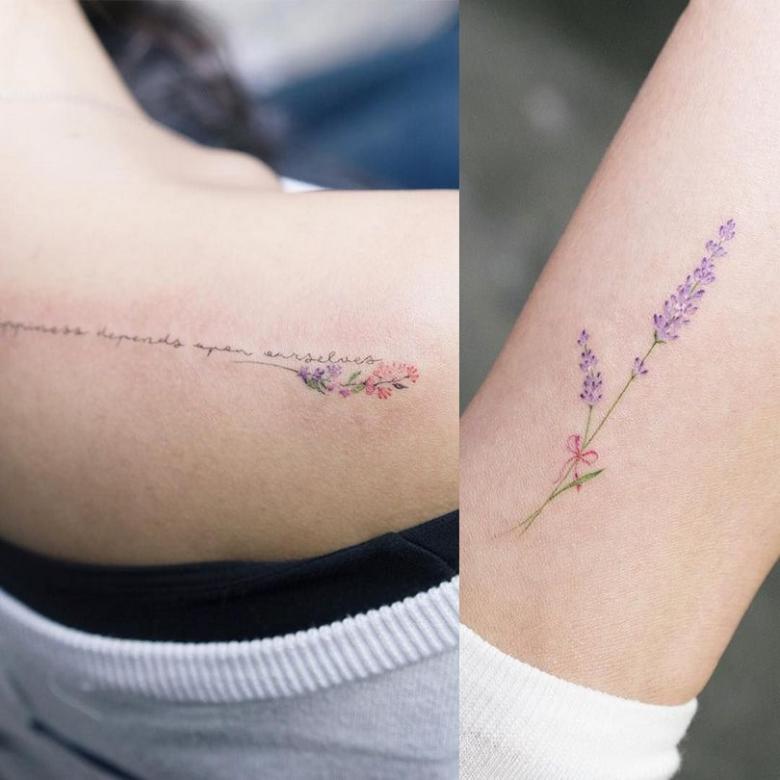
Artistic genres of tattoos
When the choice of the sketch is made, you can learn about the materials that will be used to implement the idea on the skin of the body. The classic tattoo has been replaced by a new trend that is lighter and closer to painting. Possibilities of watercolor tattoo technique create amazing compositions.
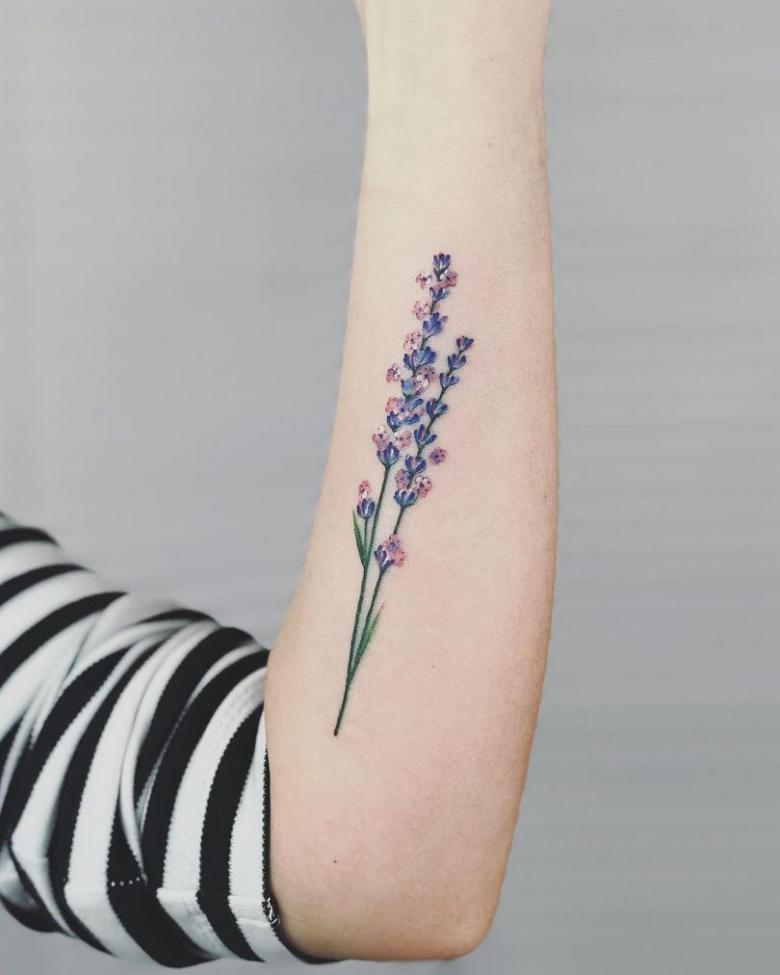
Soft contours and smooth transitions reproduce transparent, airy effects with deliberate undertones and blurred edges. Abstract trends in body art are becoming more and more common and are pushing the boundaries of individual creativity.

The effect of this style lies in the way it is painted. The needle applies the paint to the skin in strokes, like a brush. The romantic overlay of such images will not leave viewers indifferent, especially since the art of tattooing has long gone beyond monochrome and simplified graphic lines. In watercolor padding there is a large percentage of improvisation. Each completed drawing will be unique and unrepeatable, as well as the personality of its wearer.
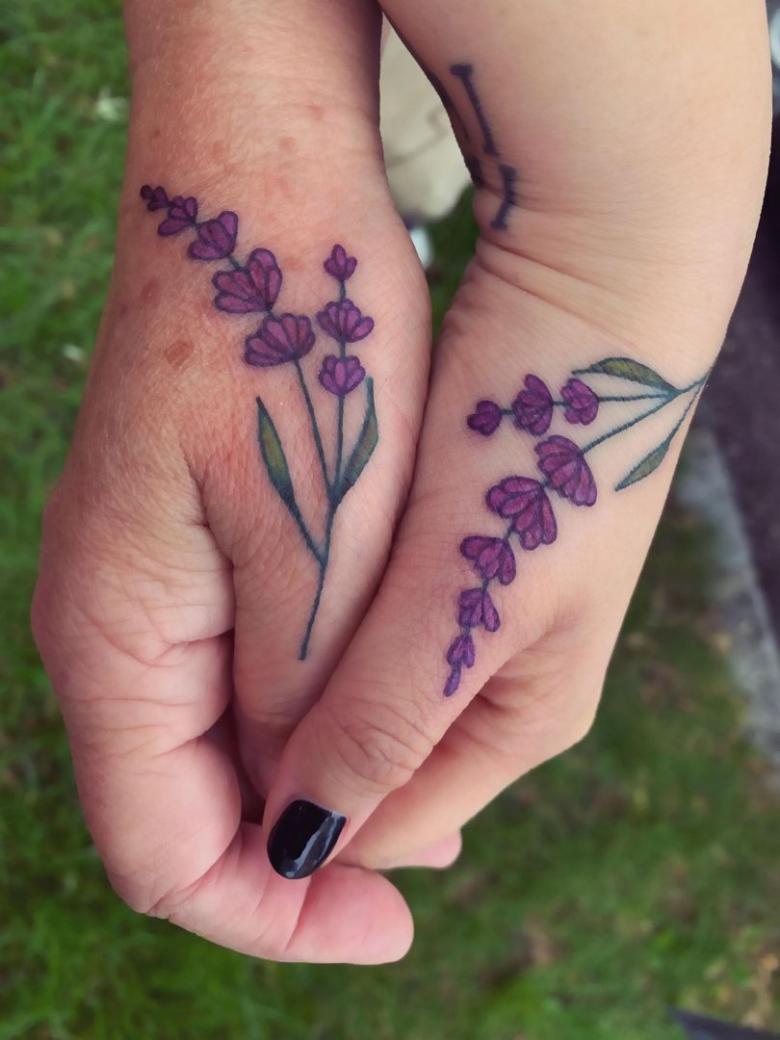
The genre of artistic multi-colored tattoo, the complexity of its performance require great skill and experience. The picture can be made by the selected photo from numerous catalogs, or sketch of the customer.
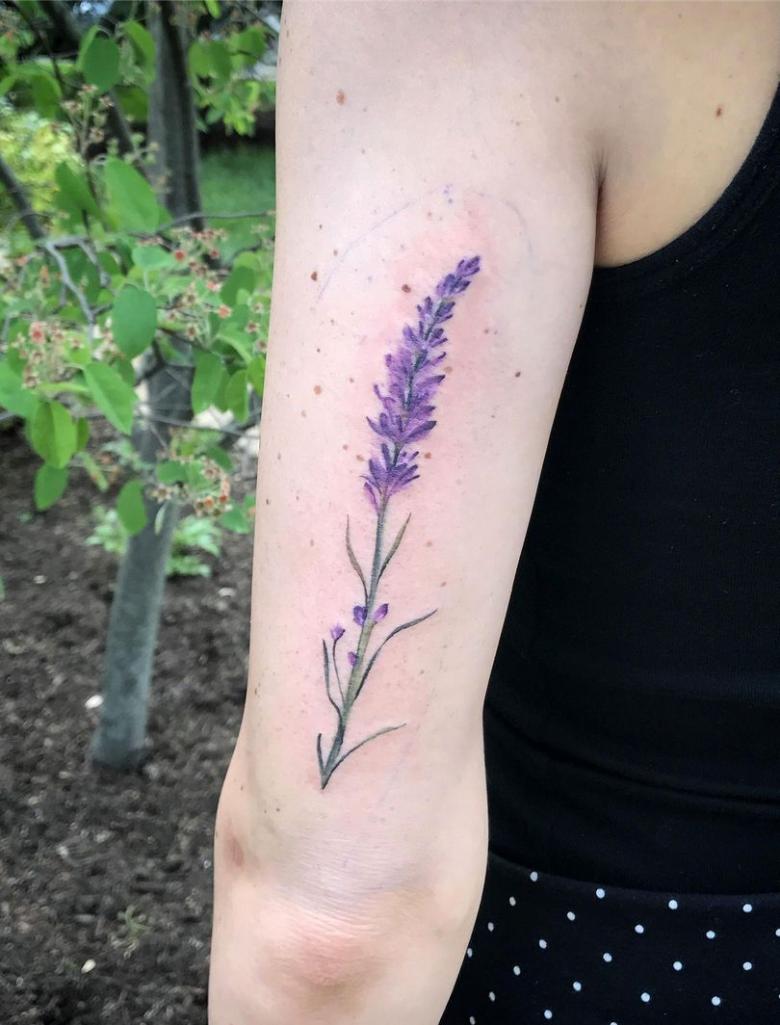
Also the master himself can show his examples and sketches on the proposed subject. The quality of the chosen tattoo depends on the competent choice of the artist and careful preliminary design. And then the talent of the artist will create the chosen flower so that it will look like a living one, peering through the top thin layer of skin.

